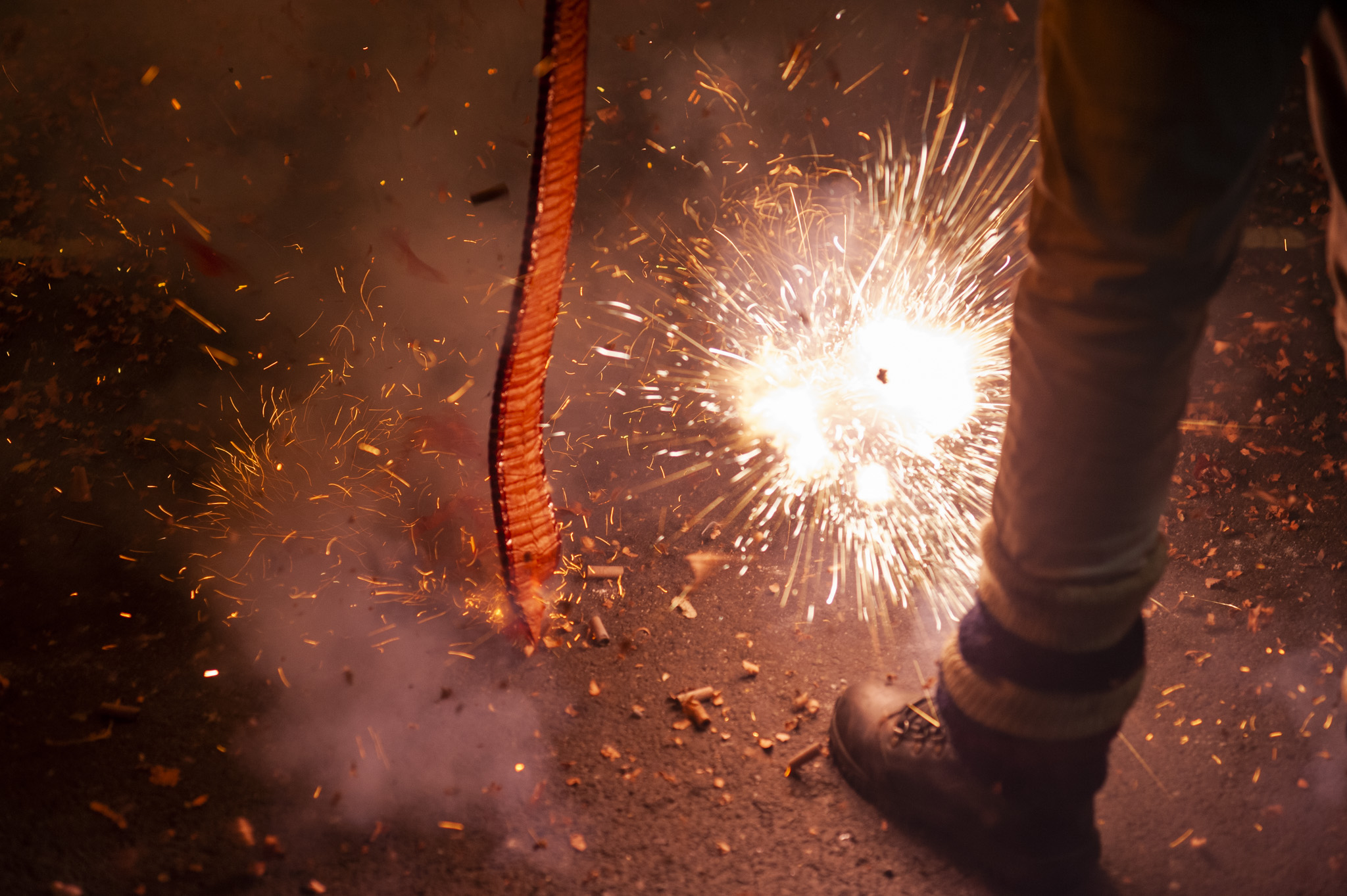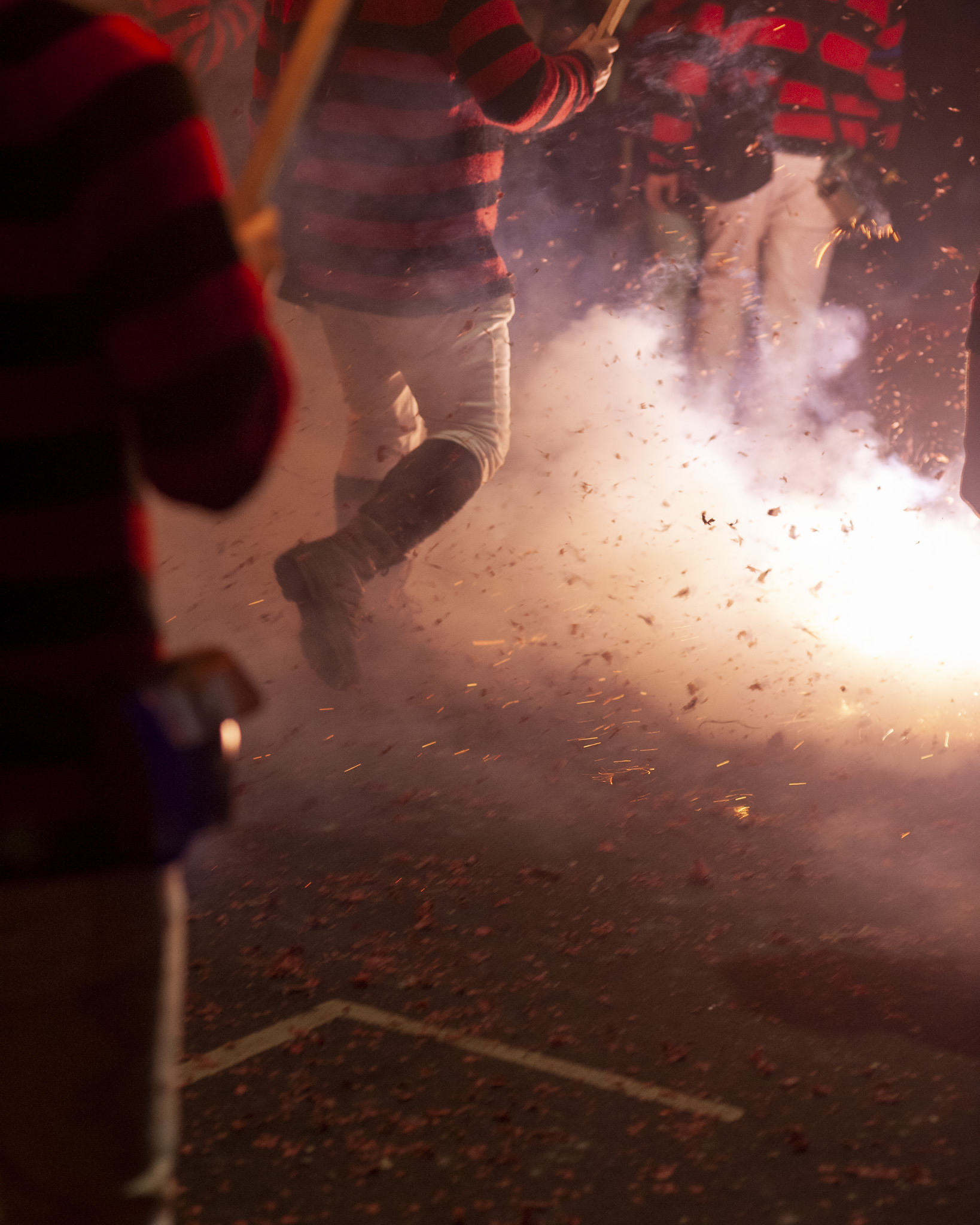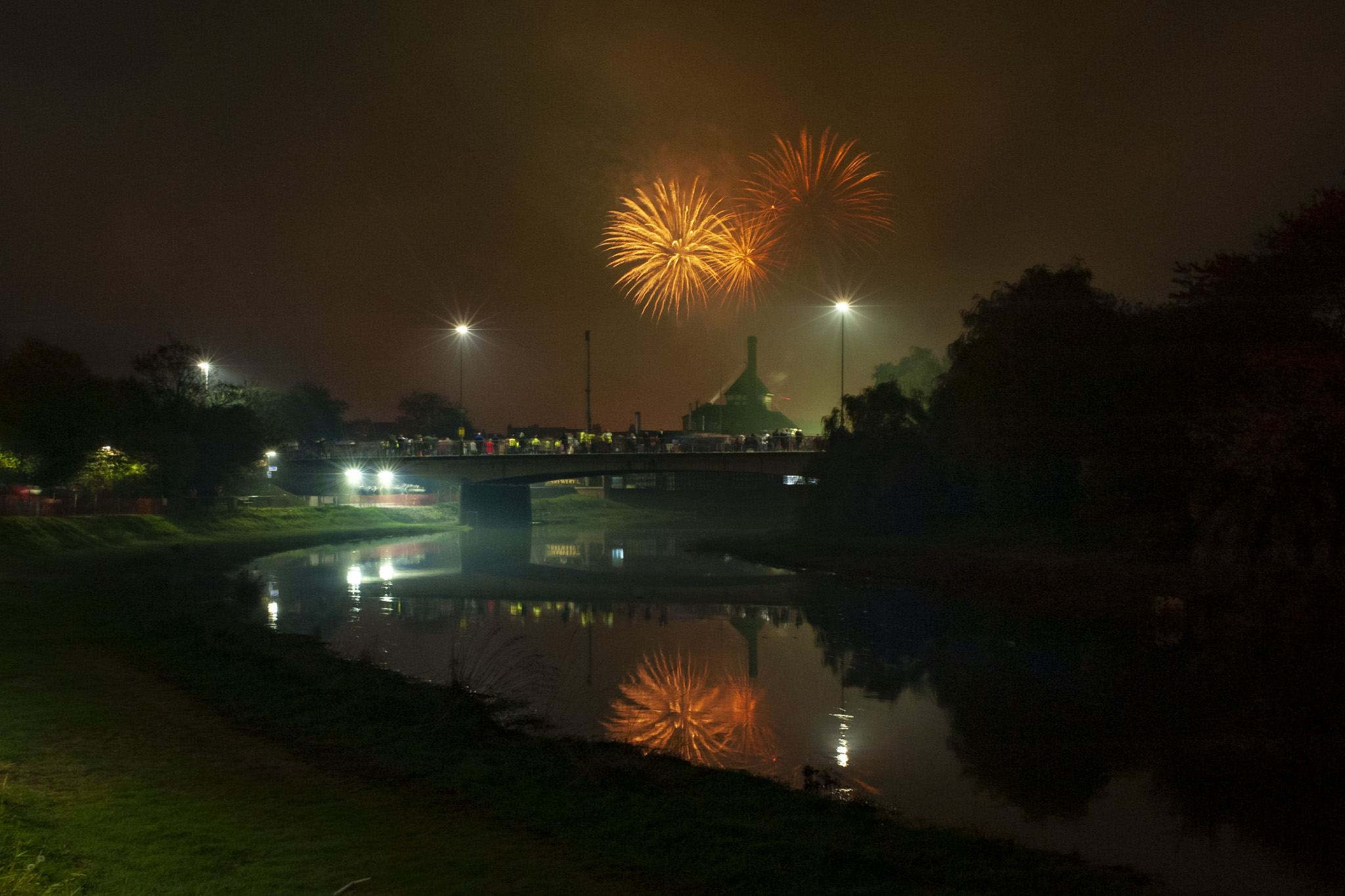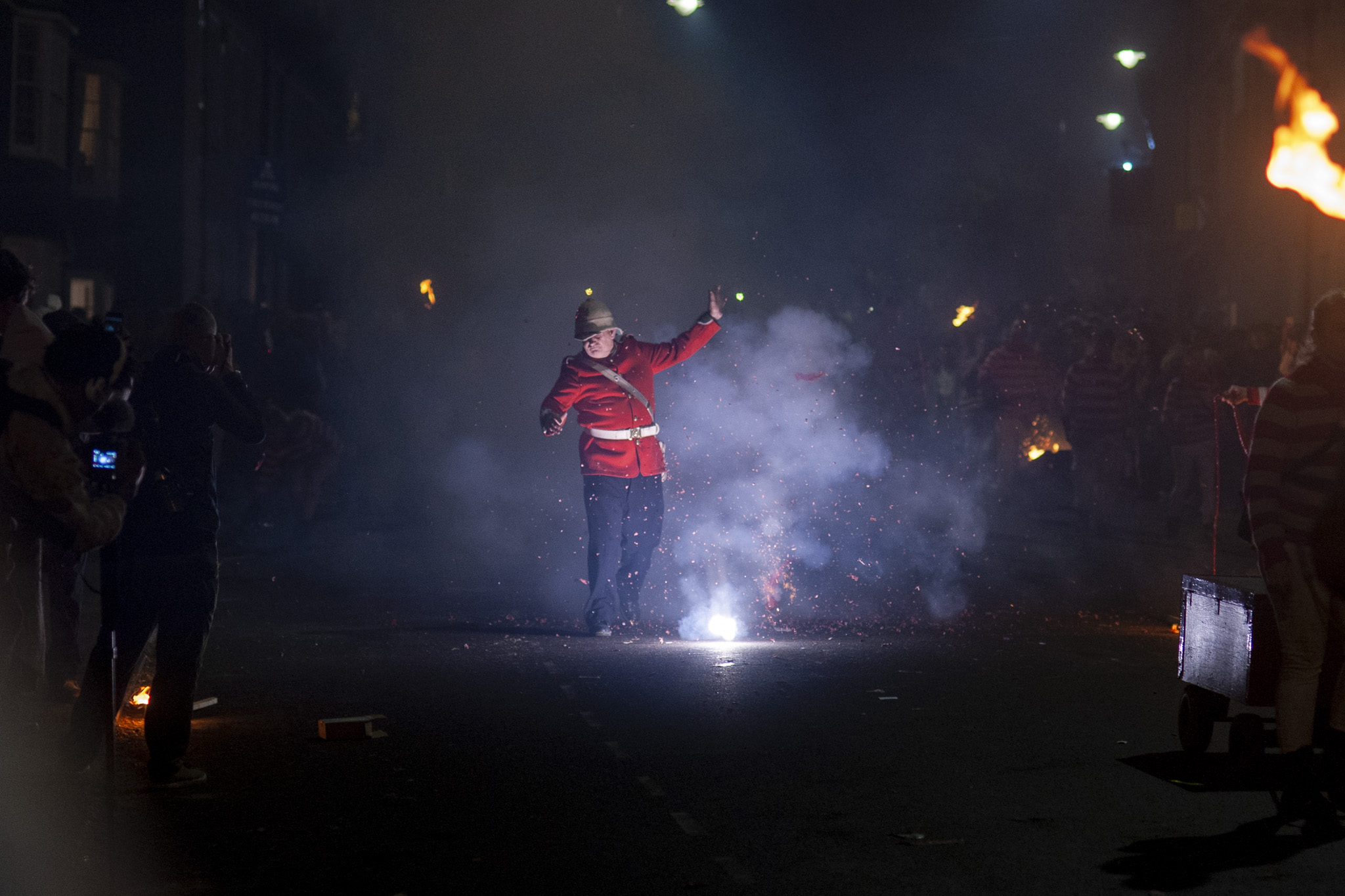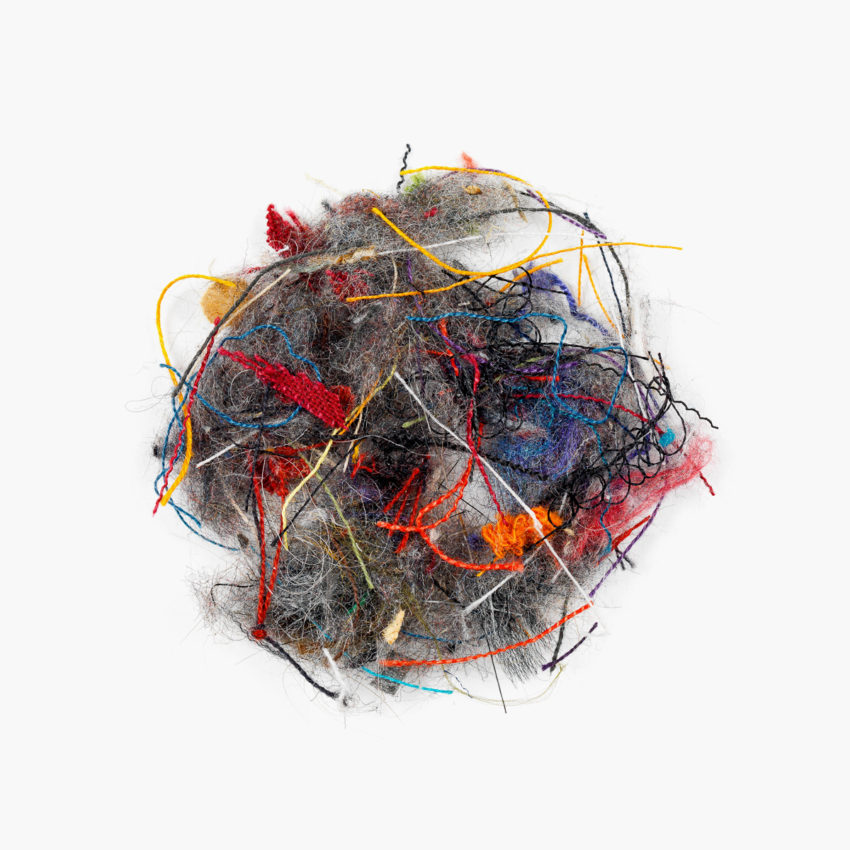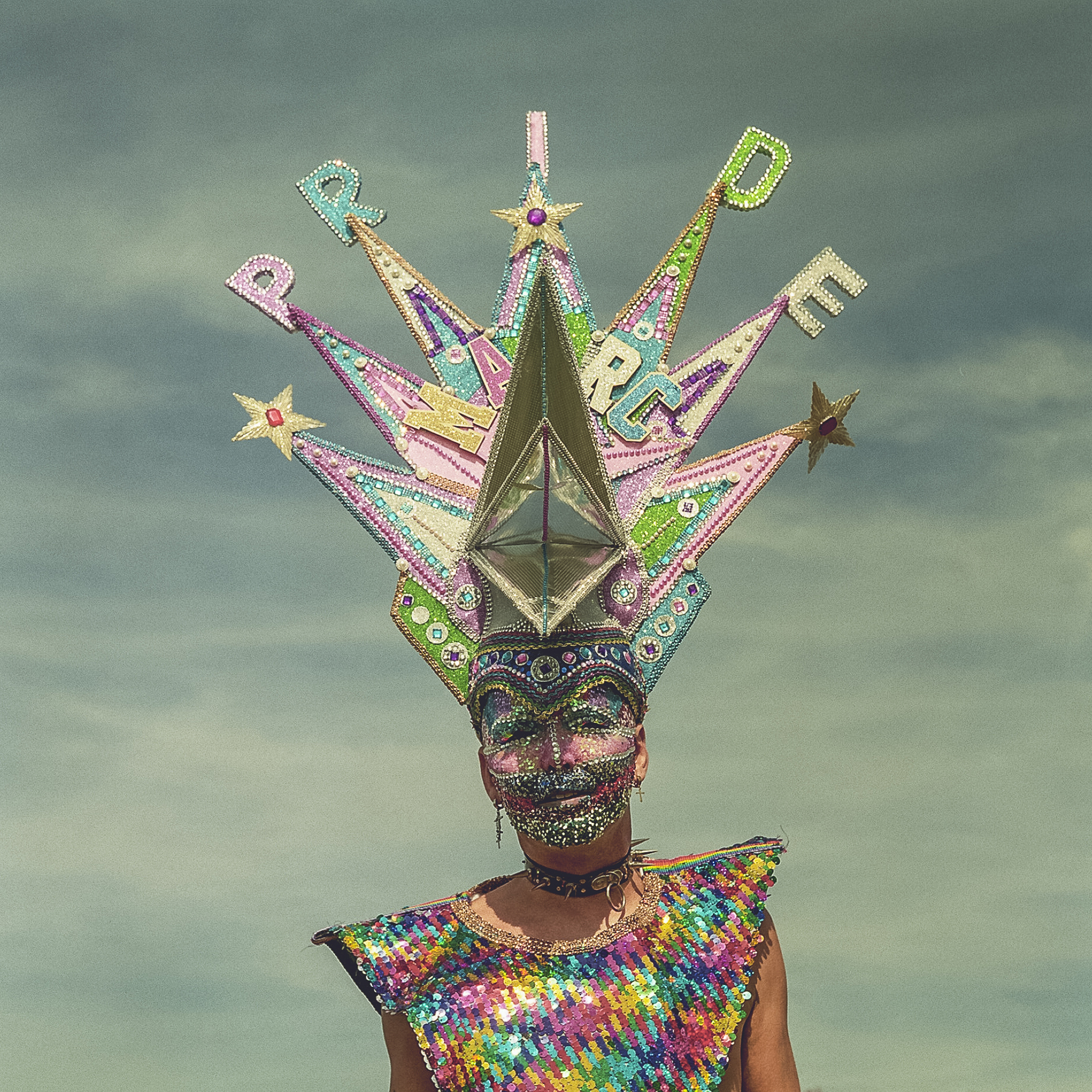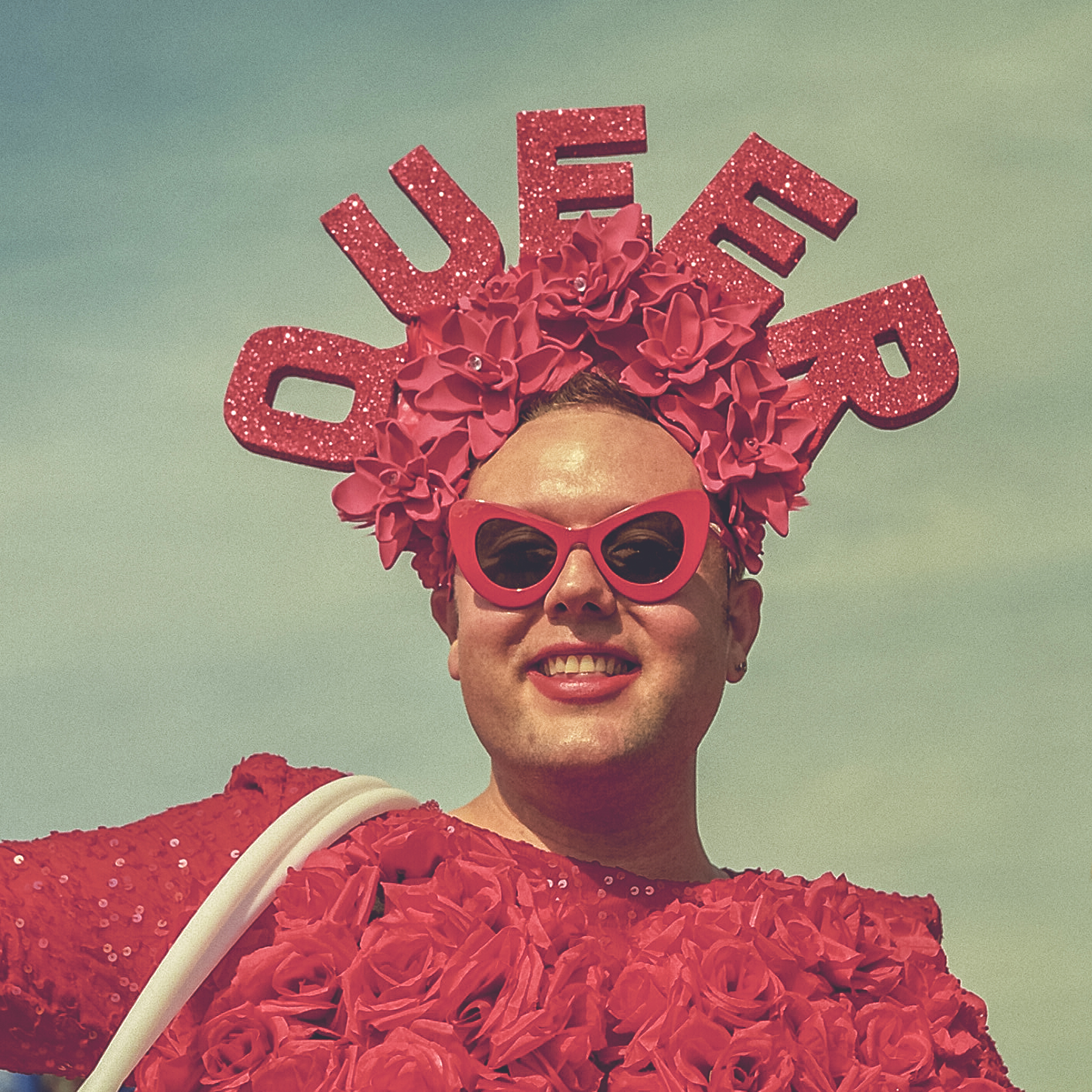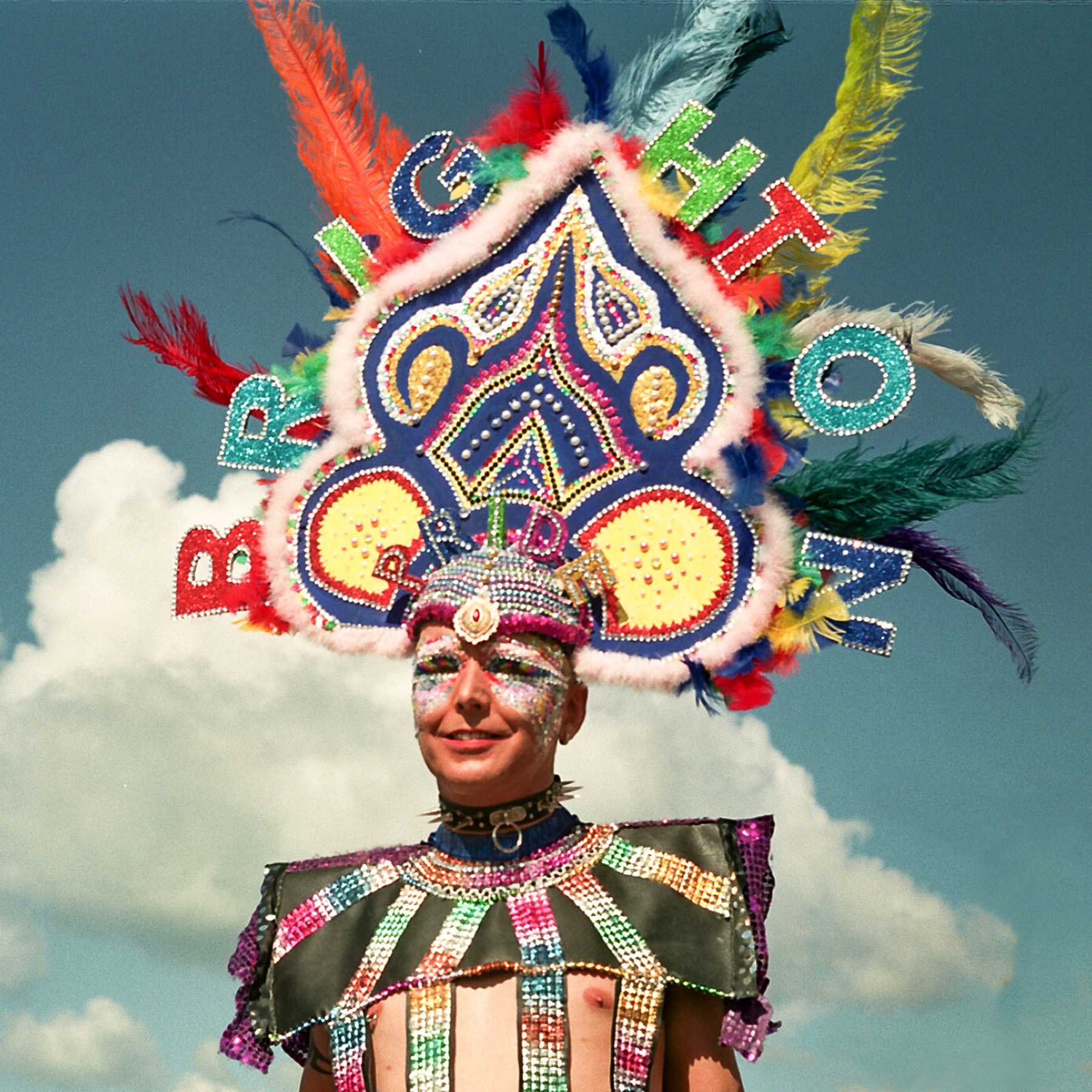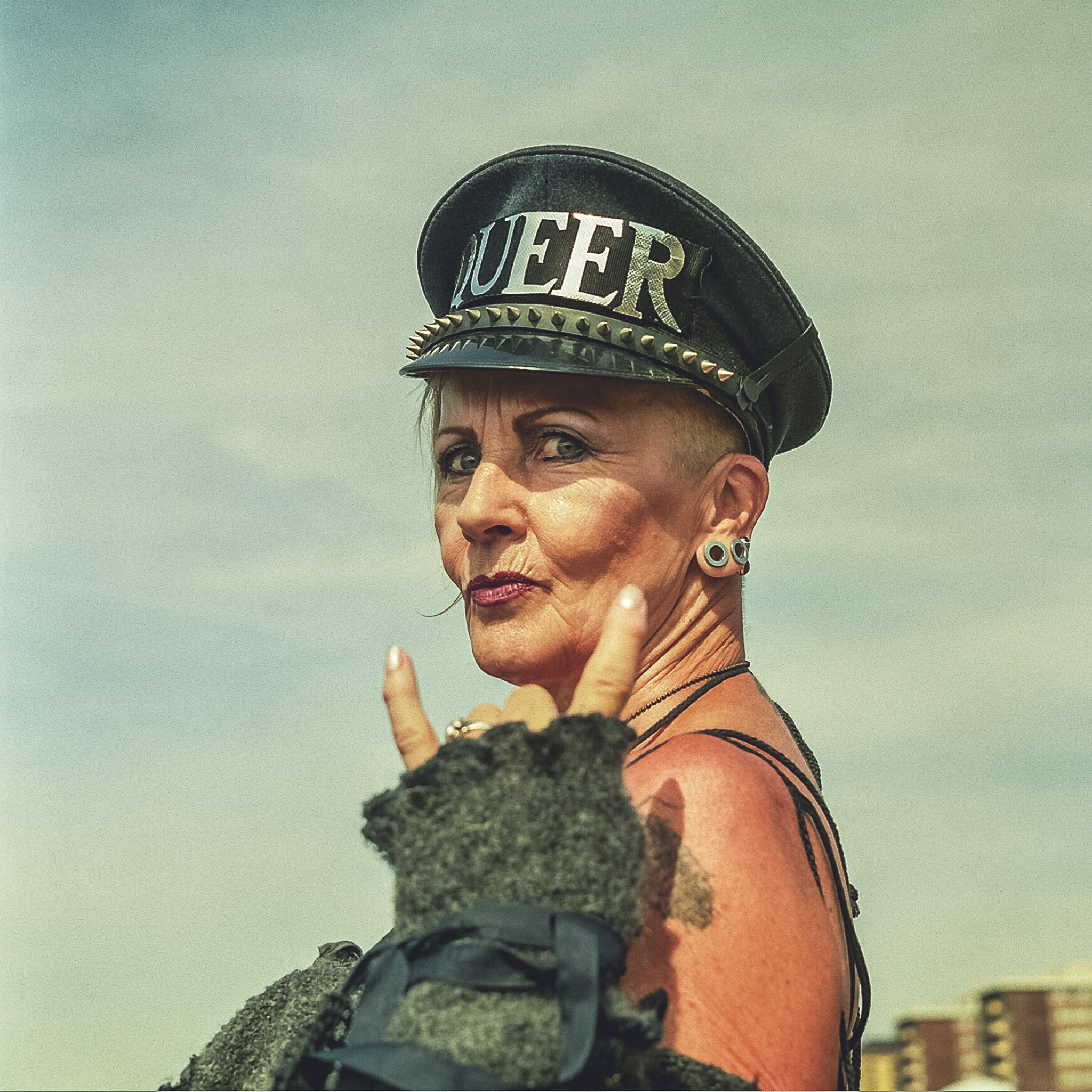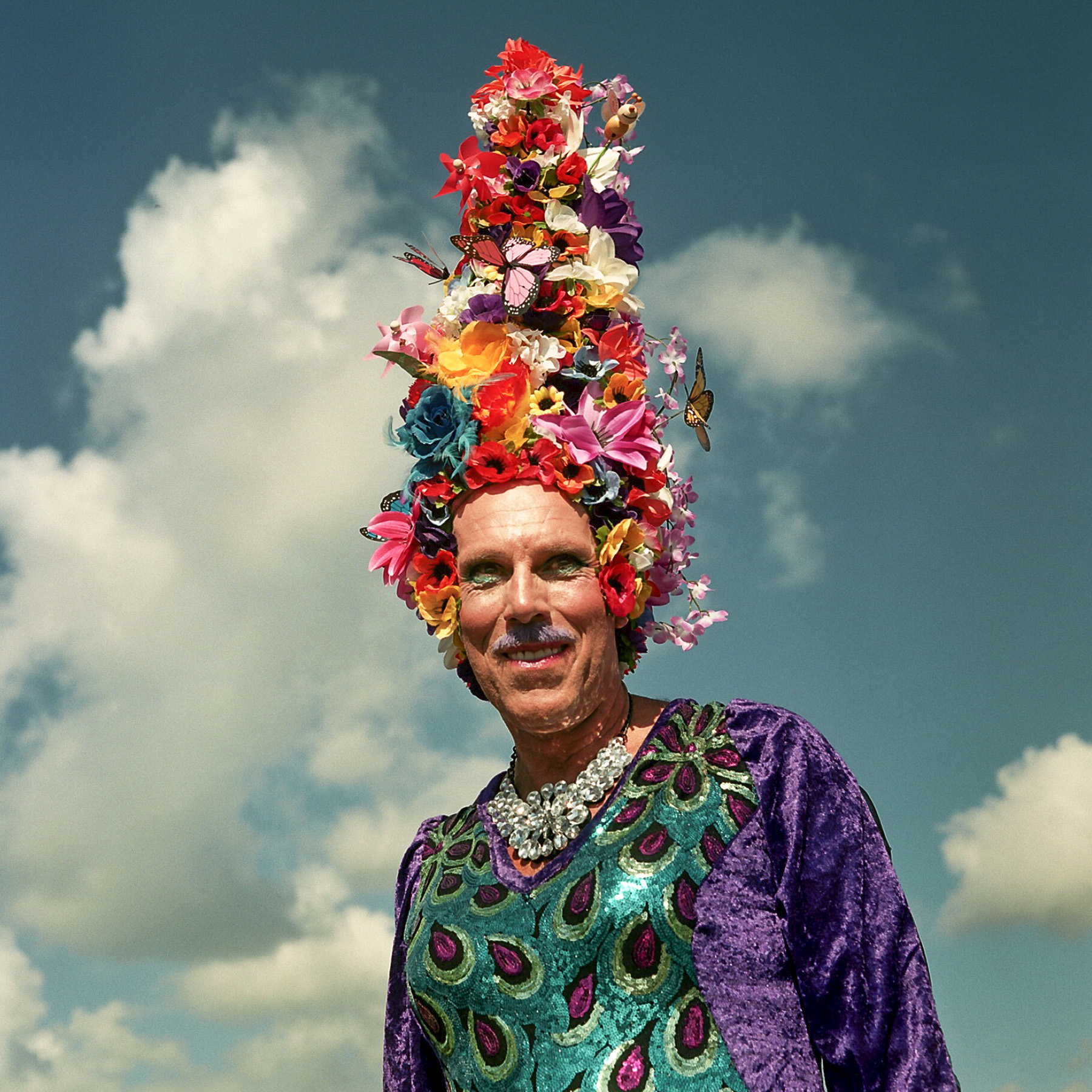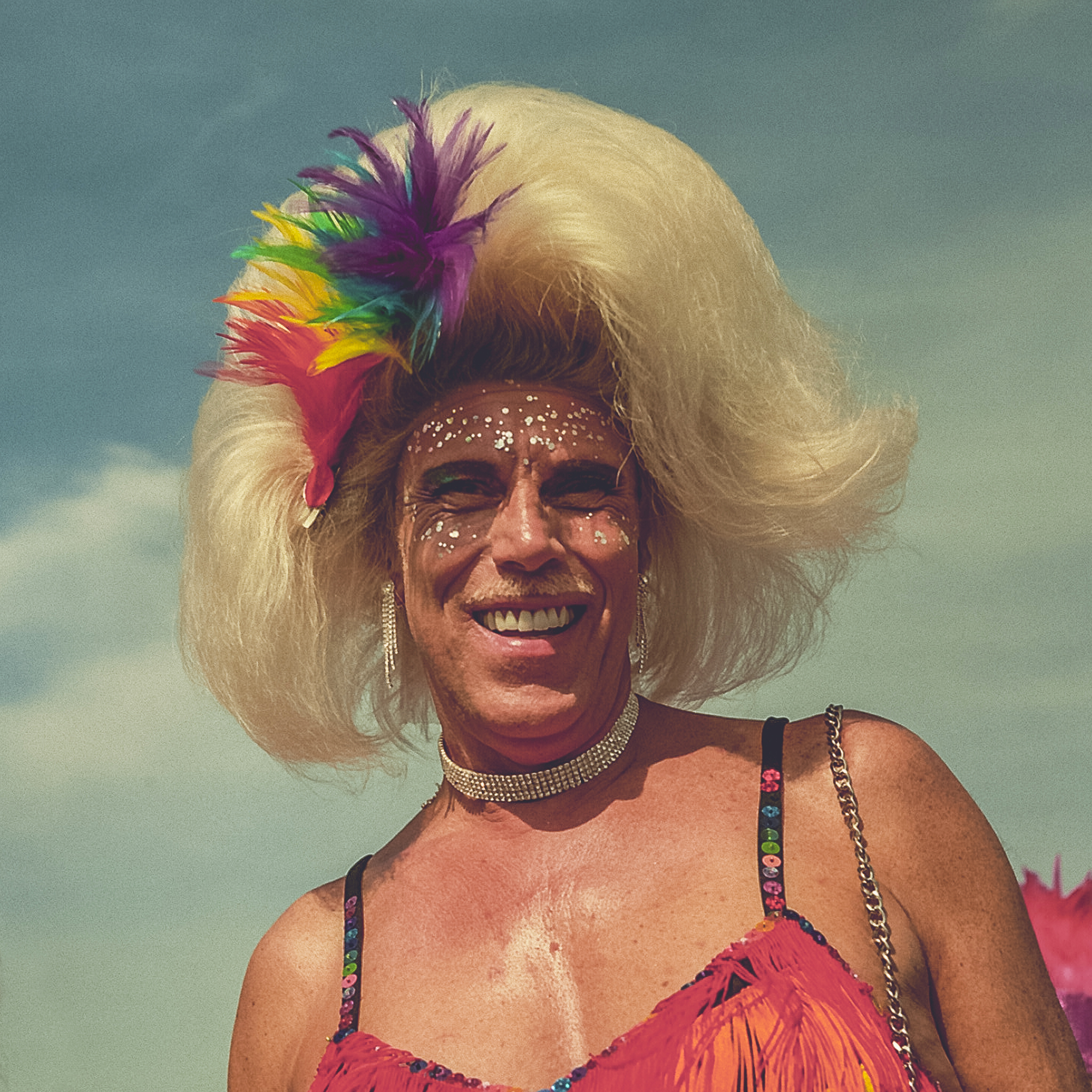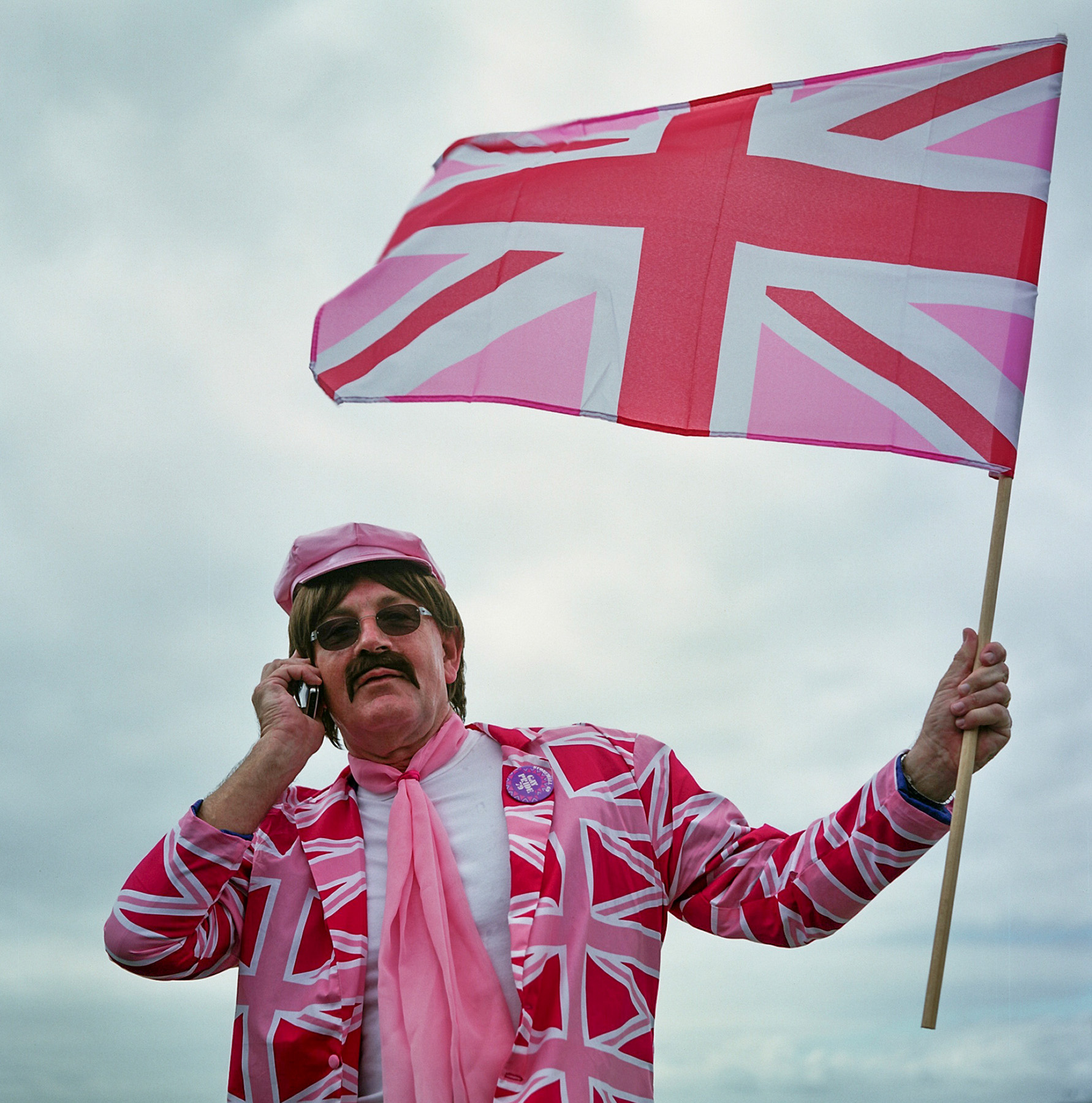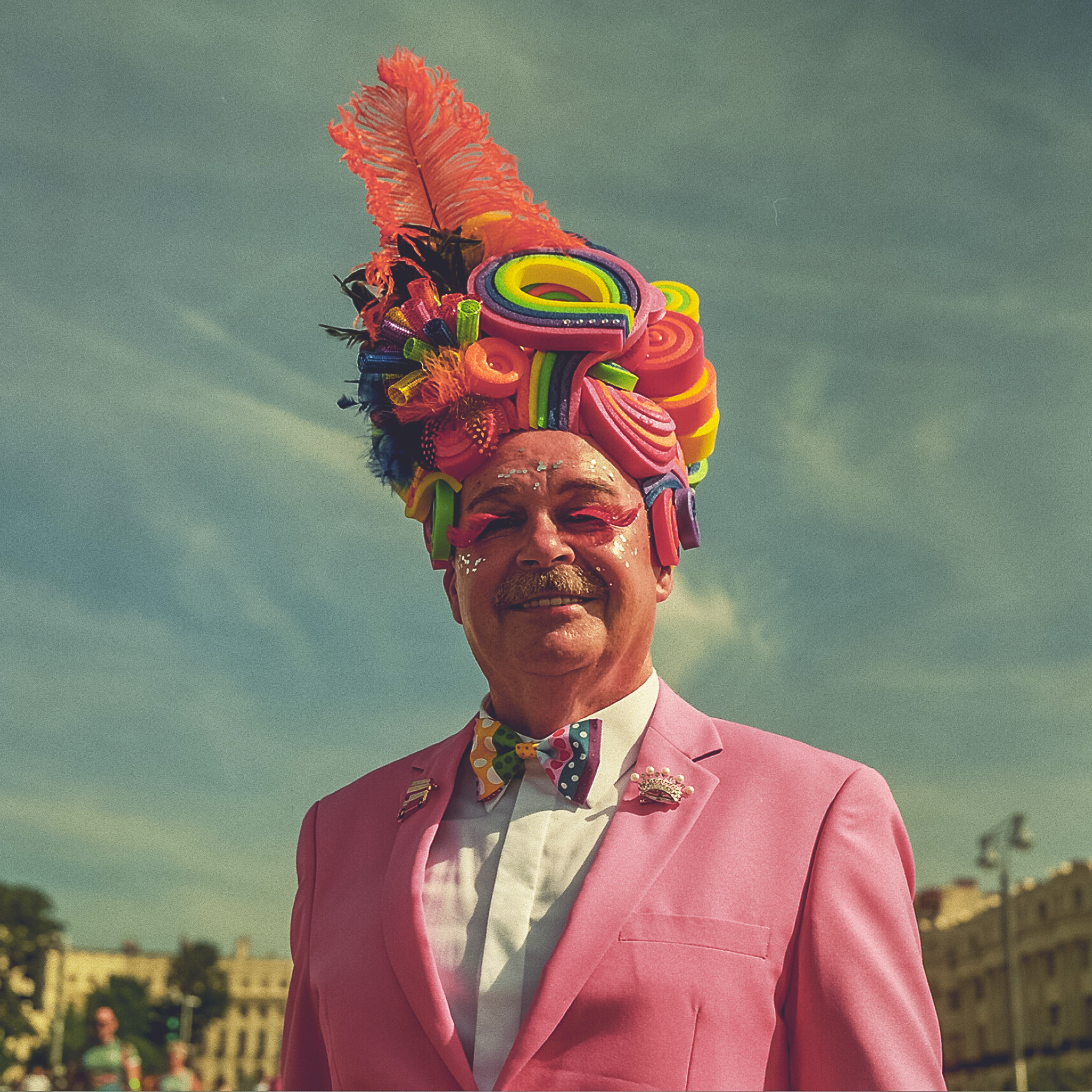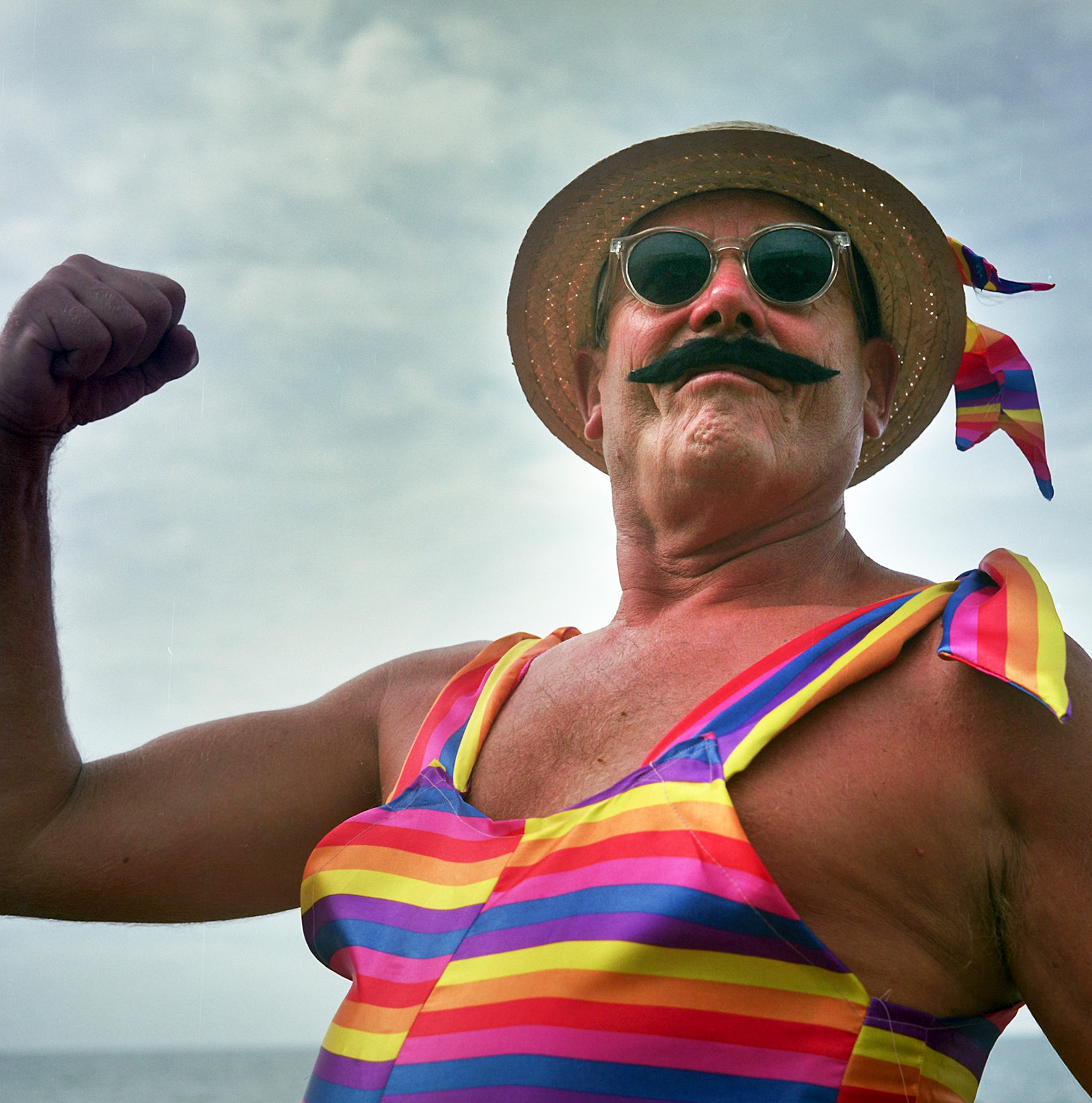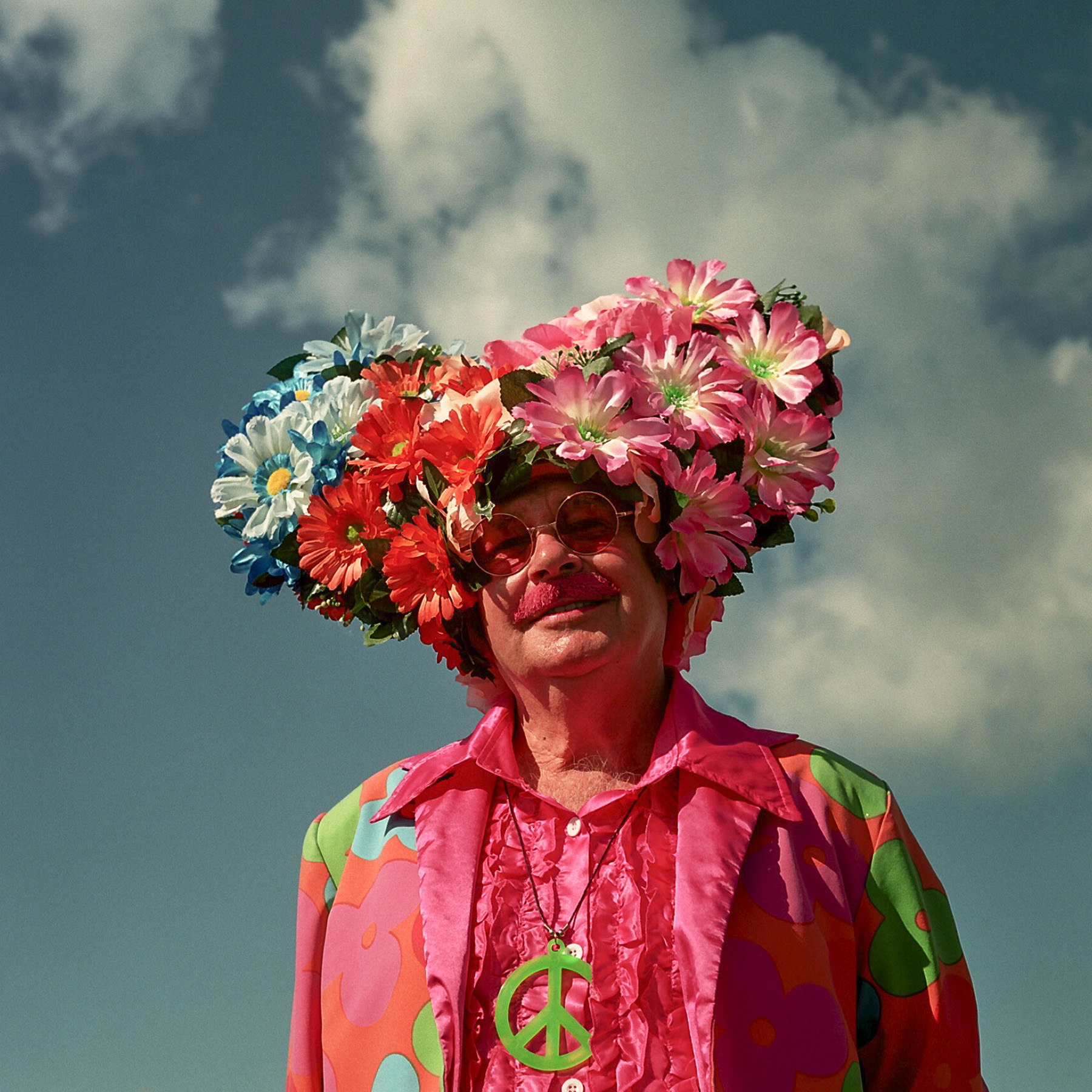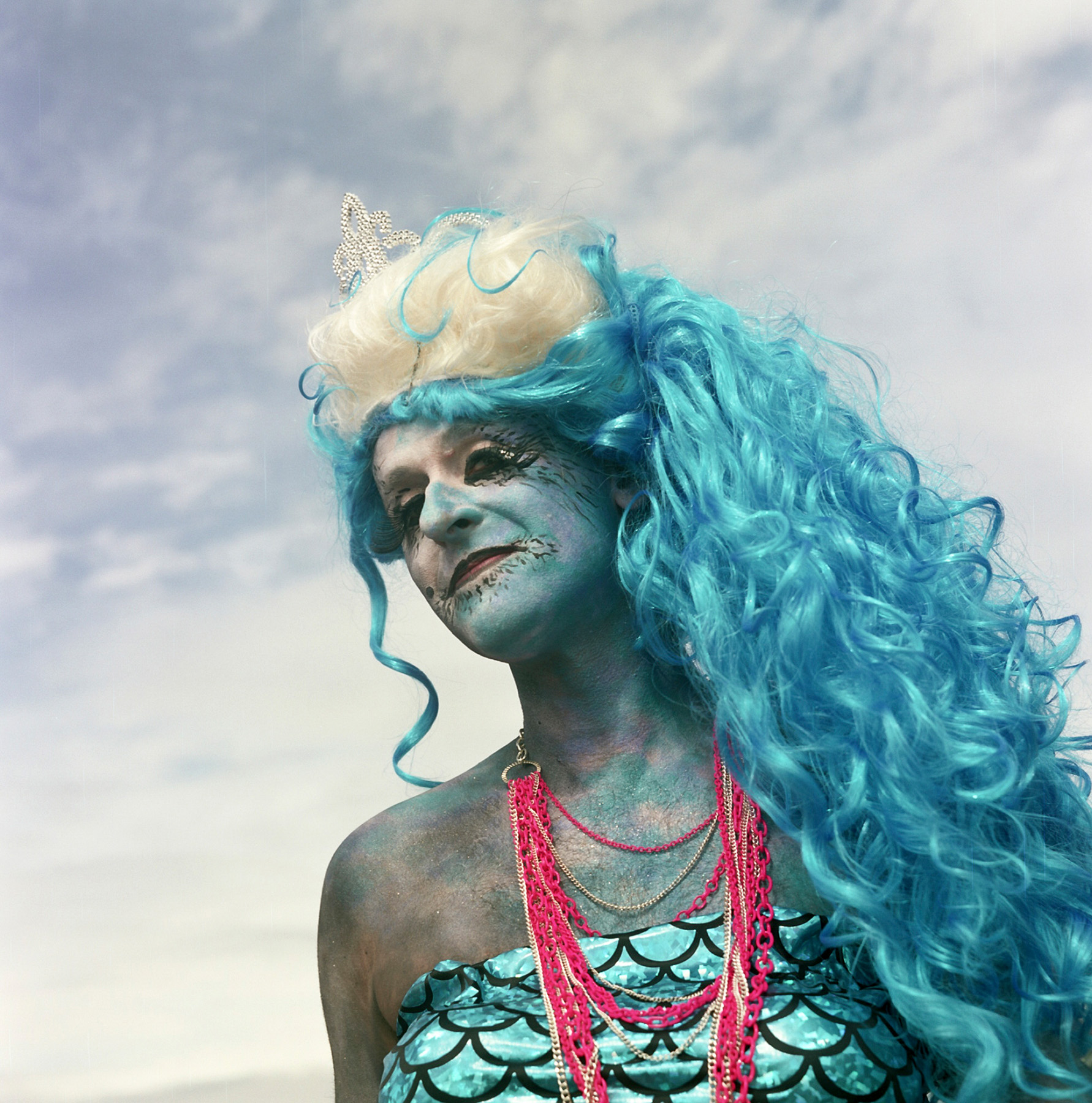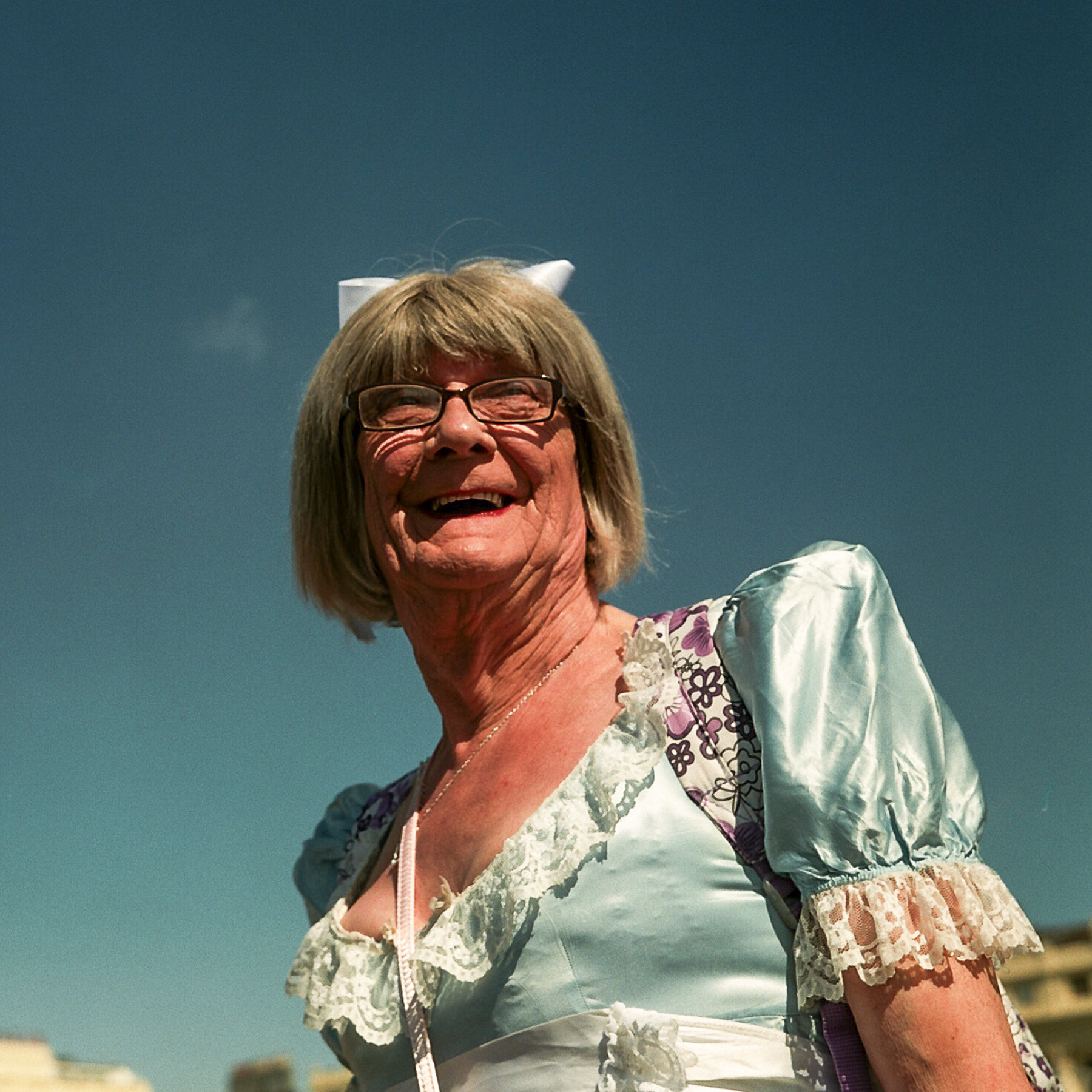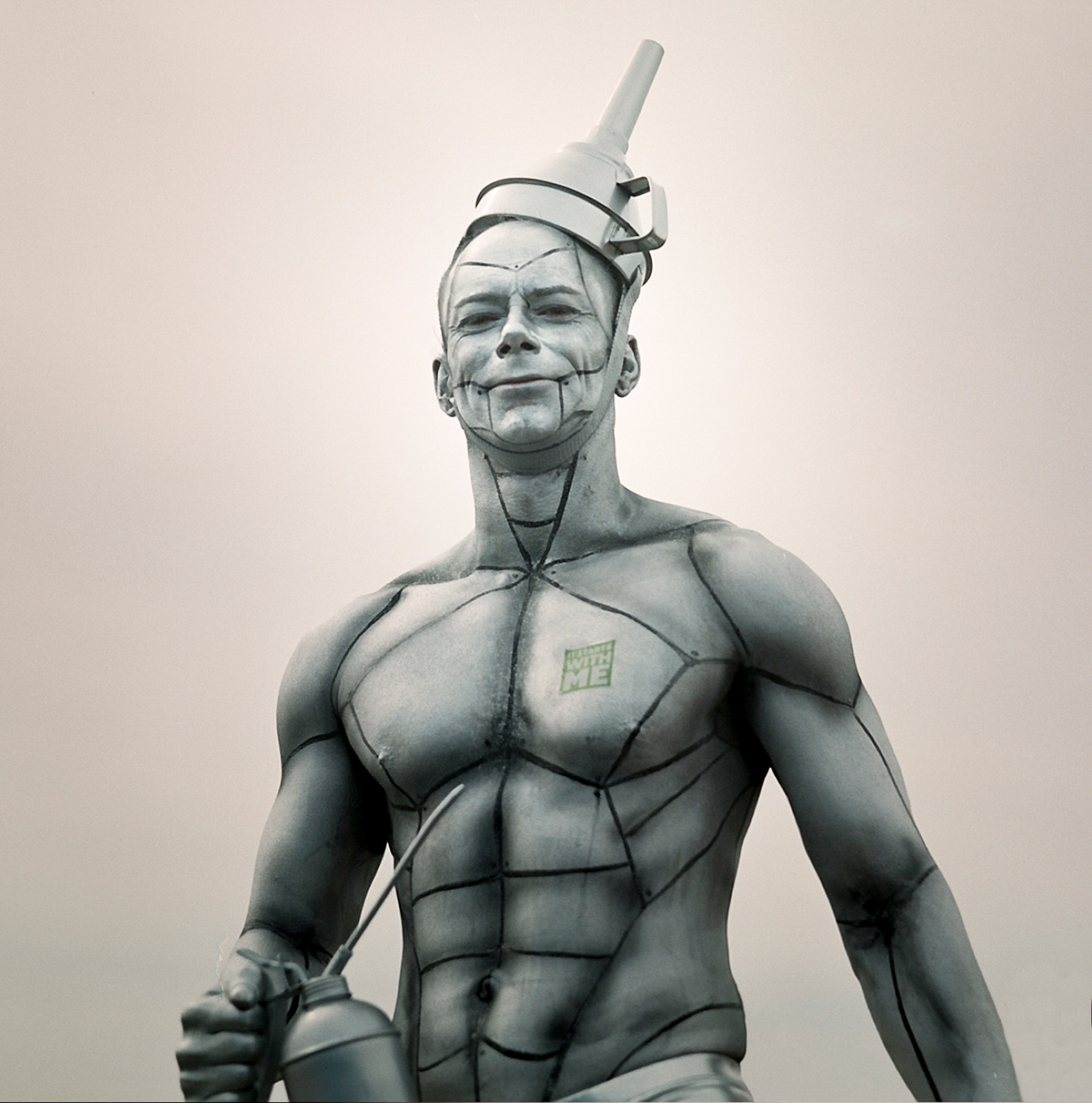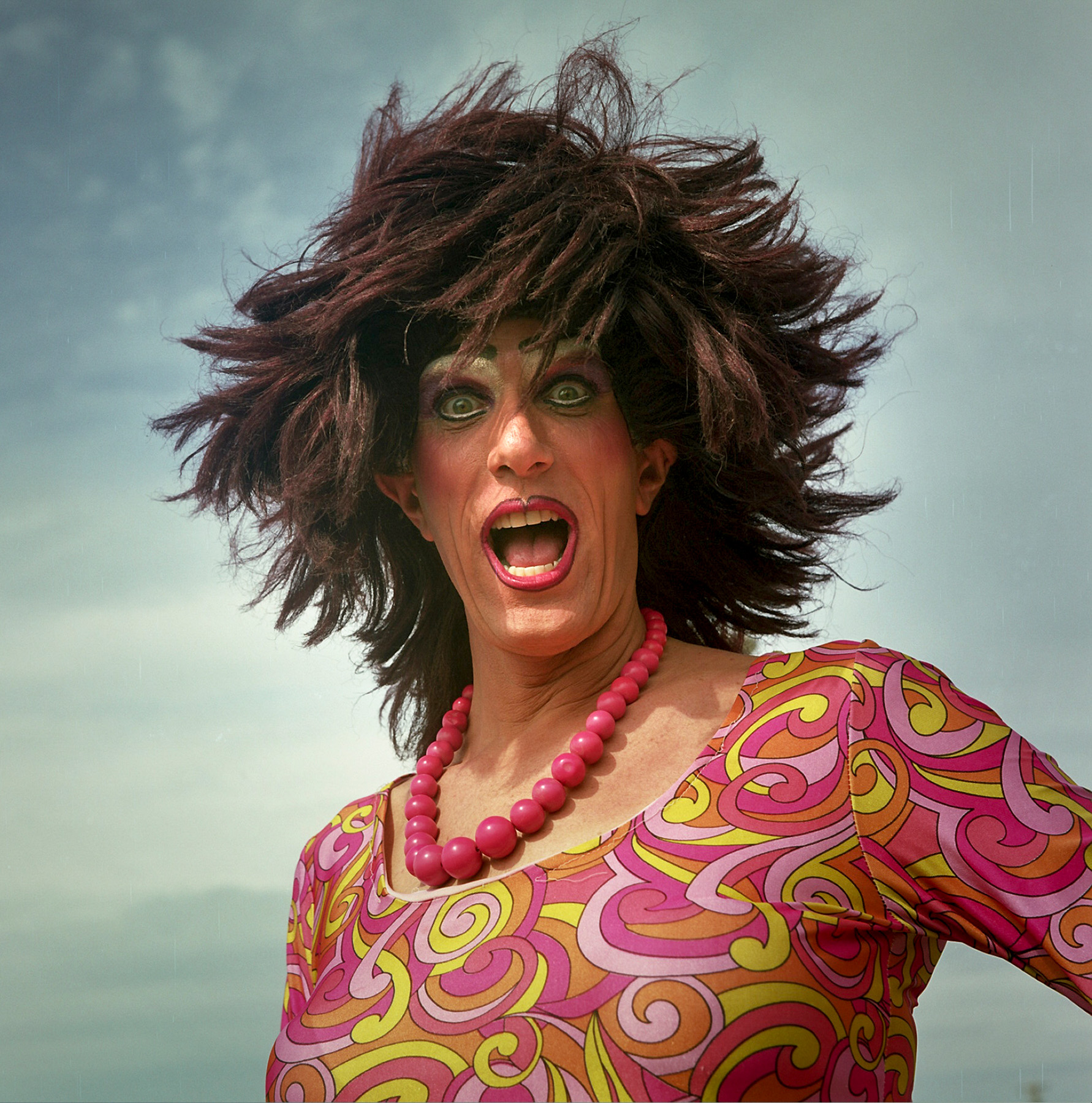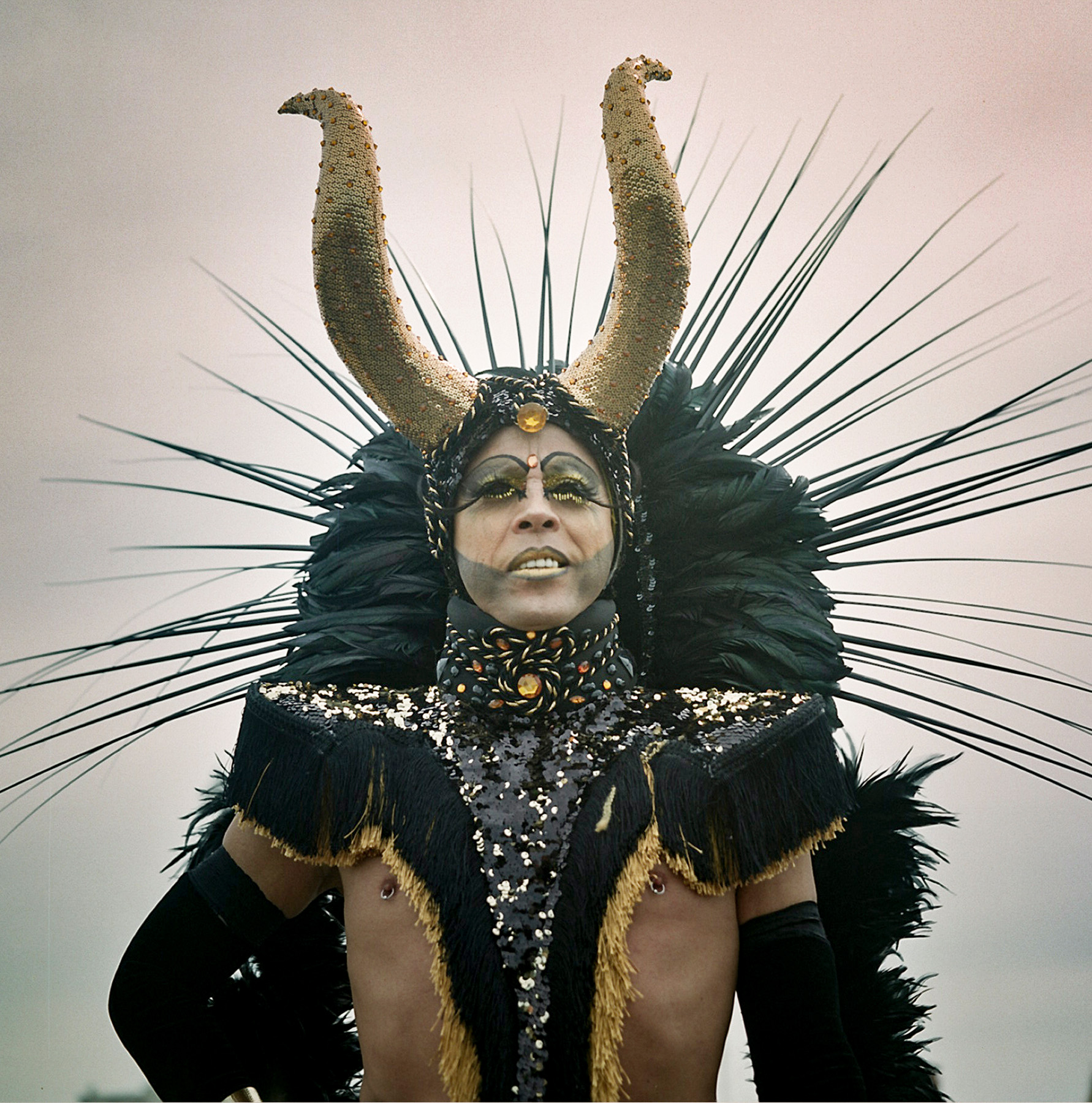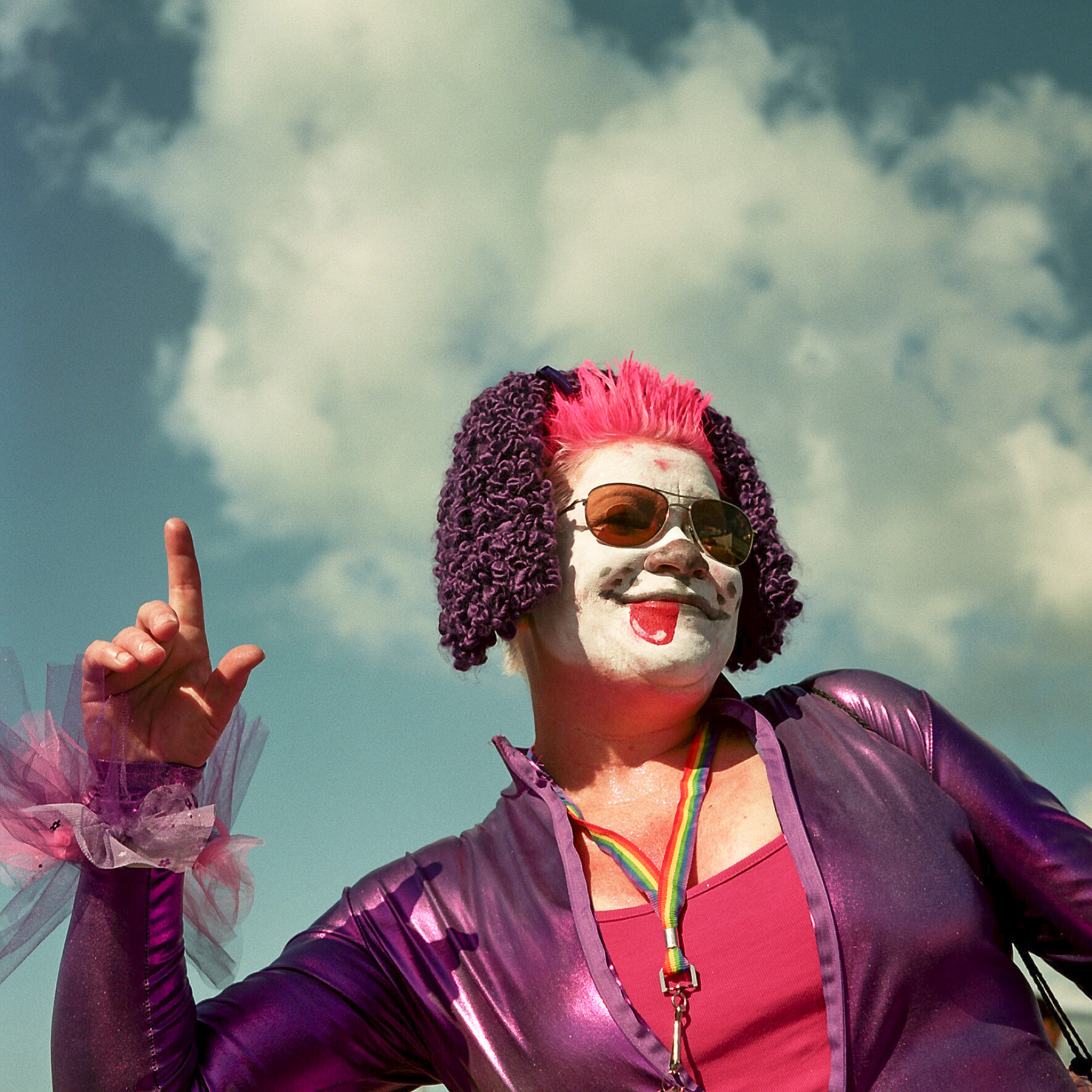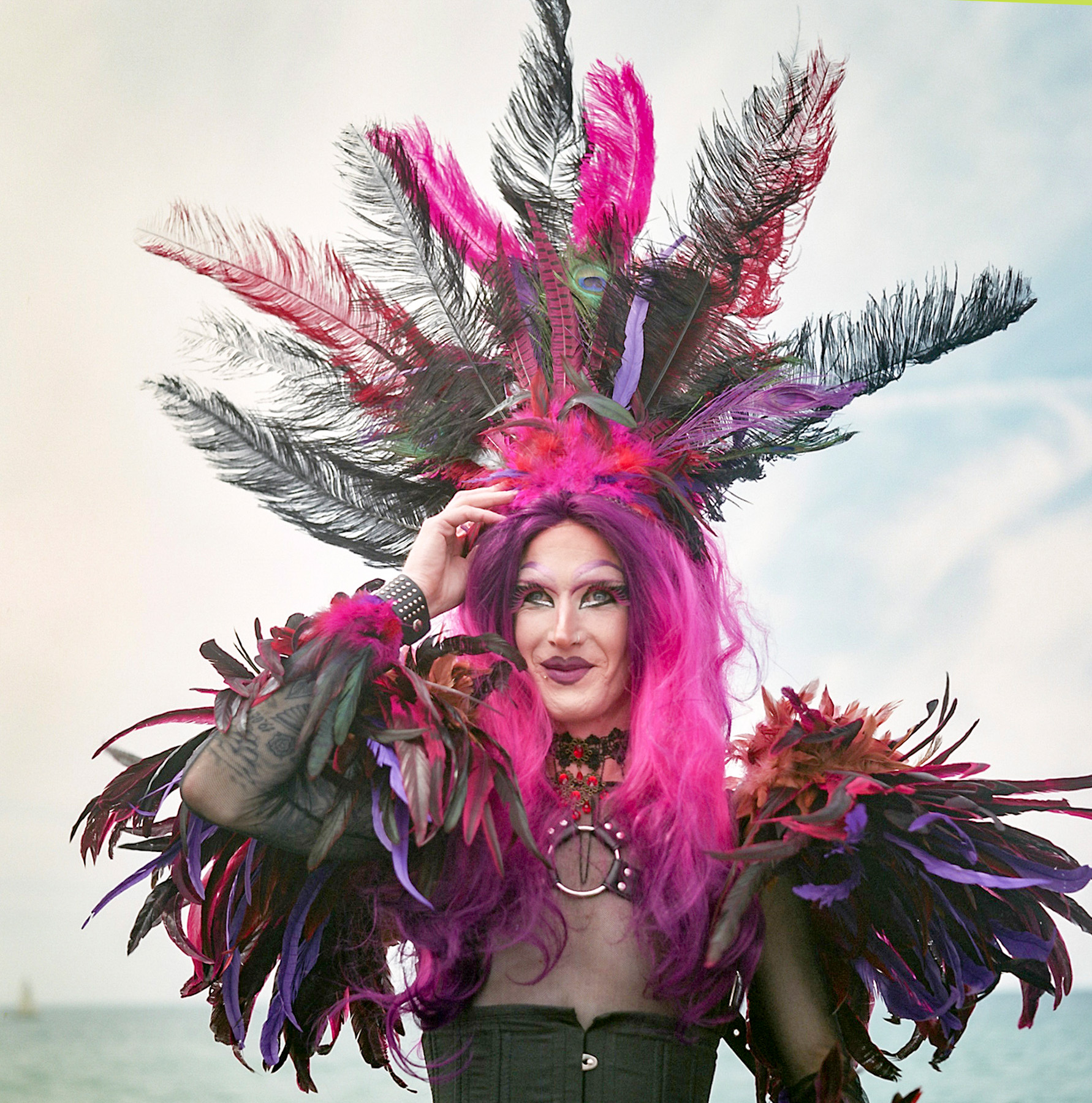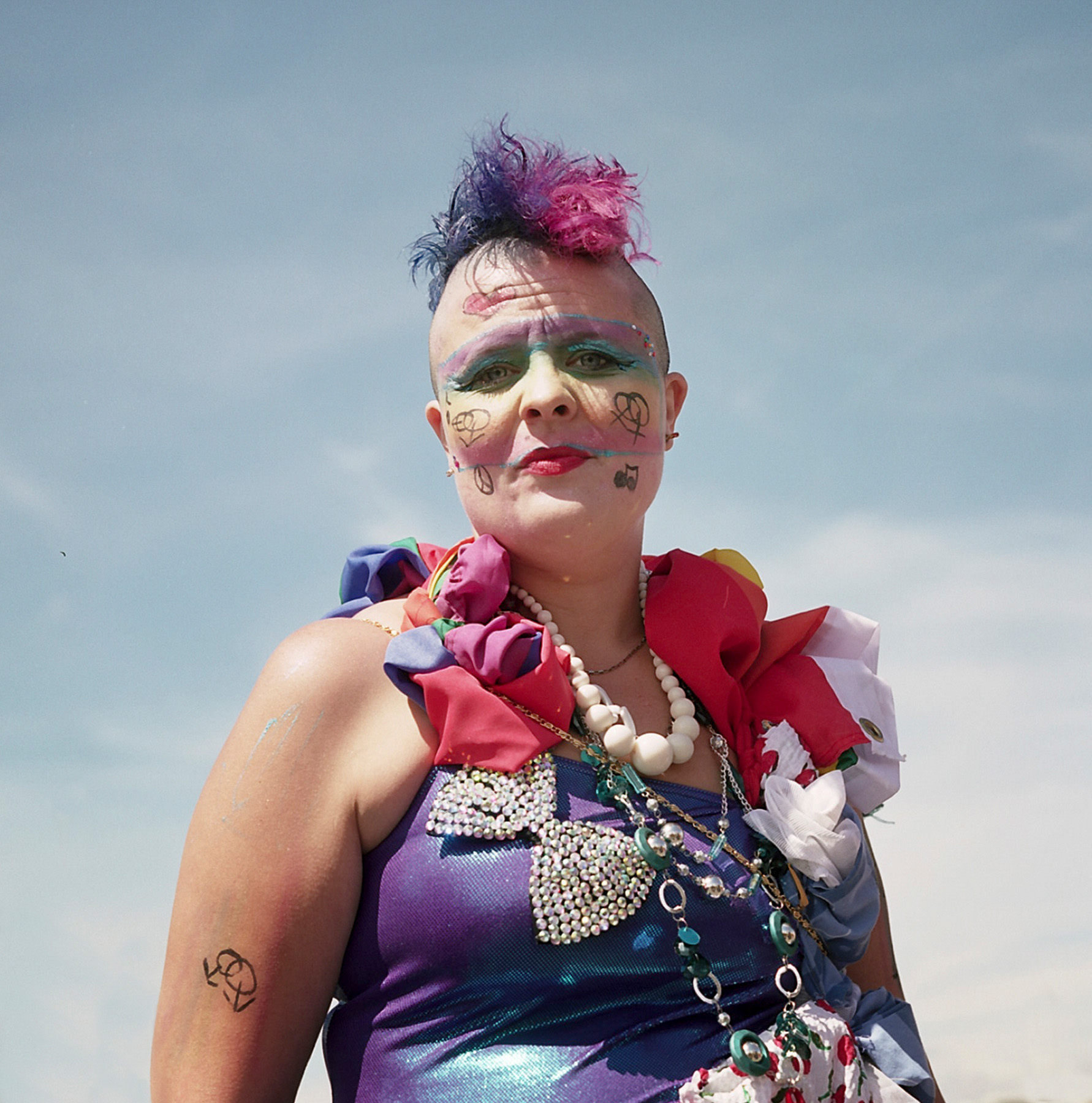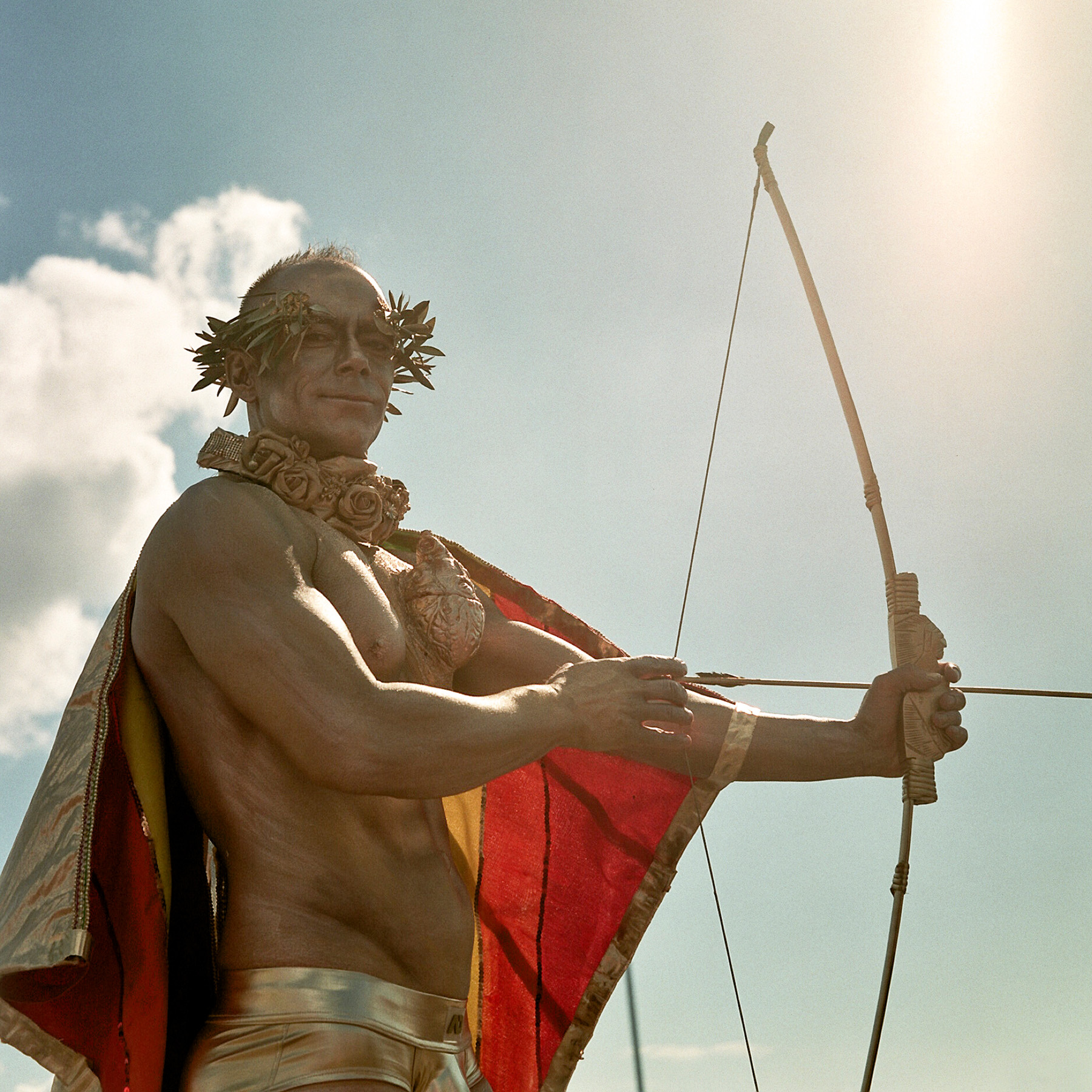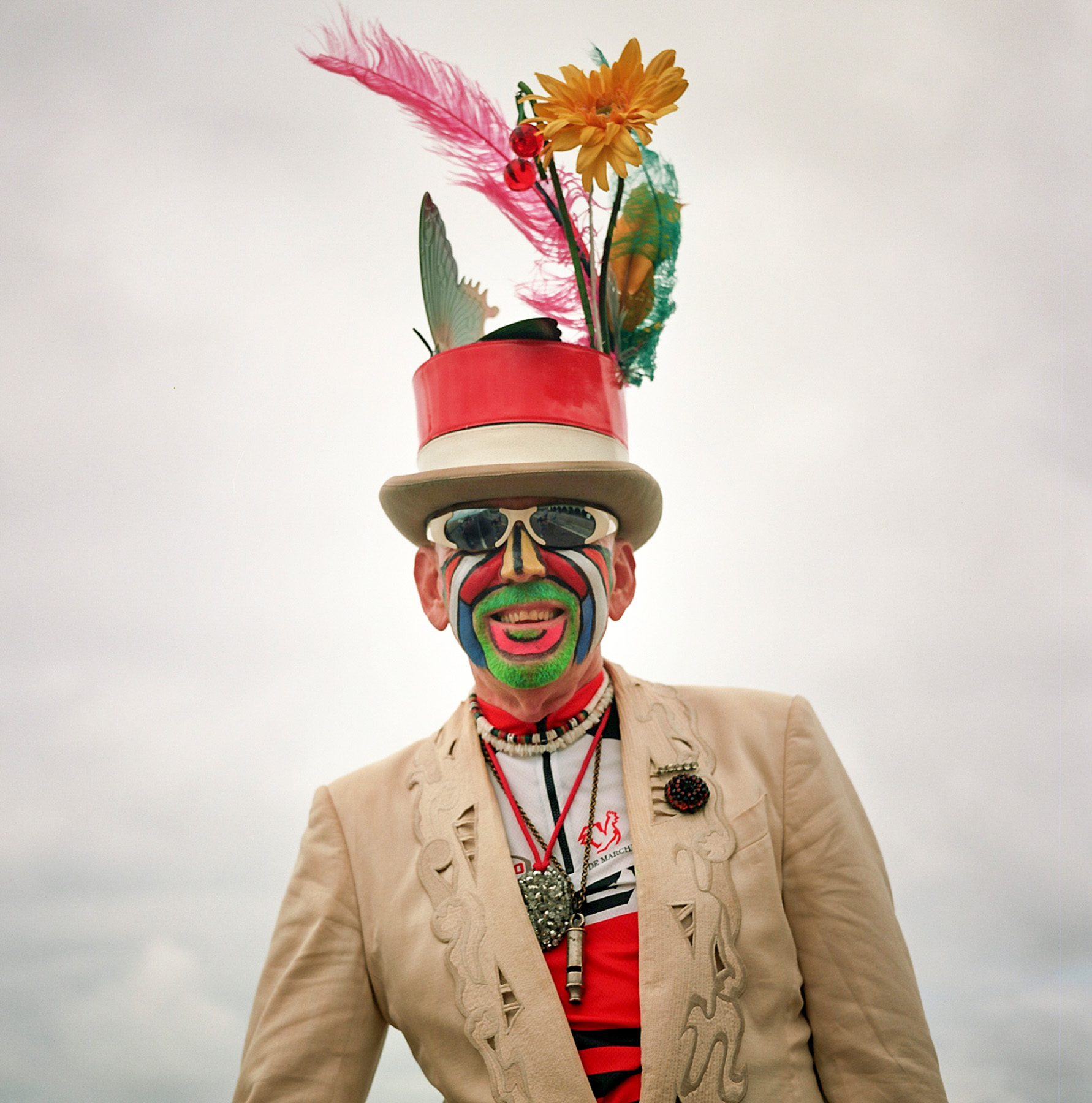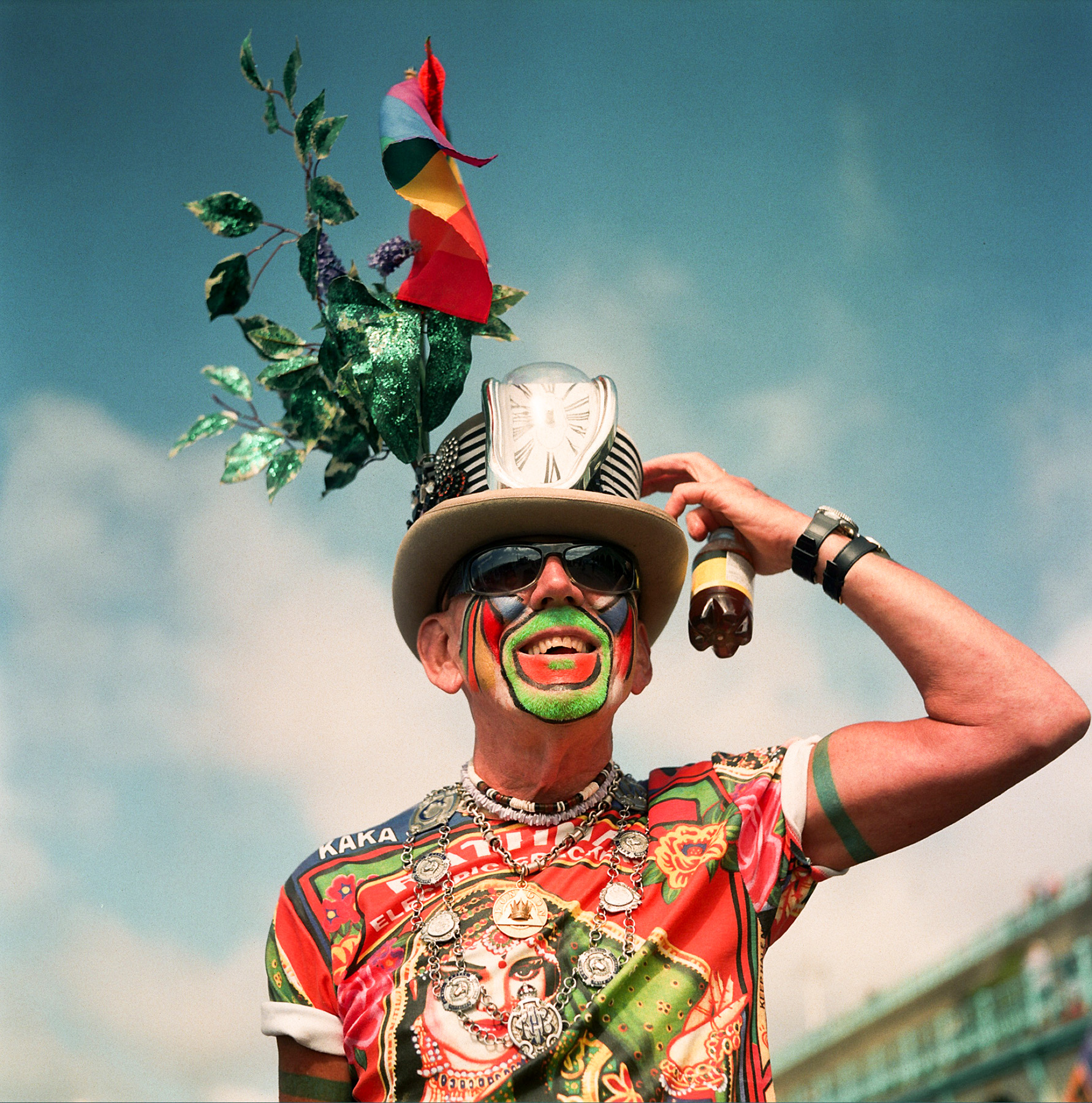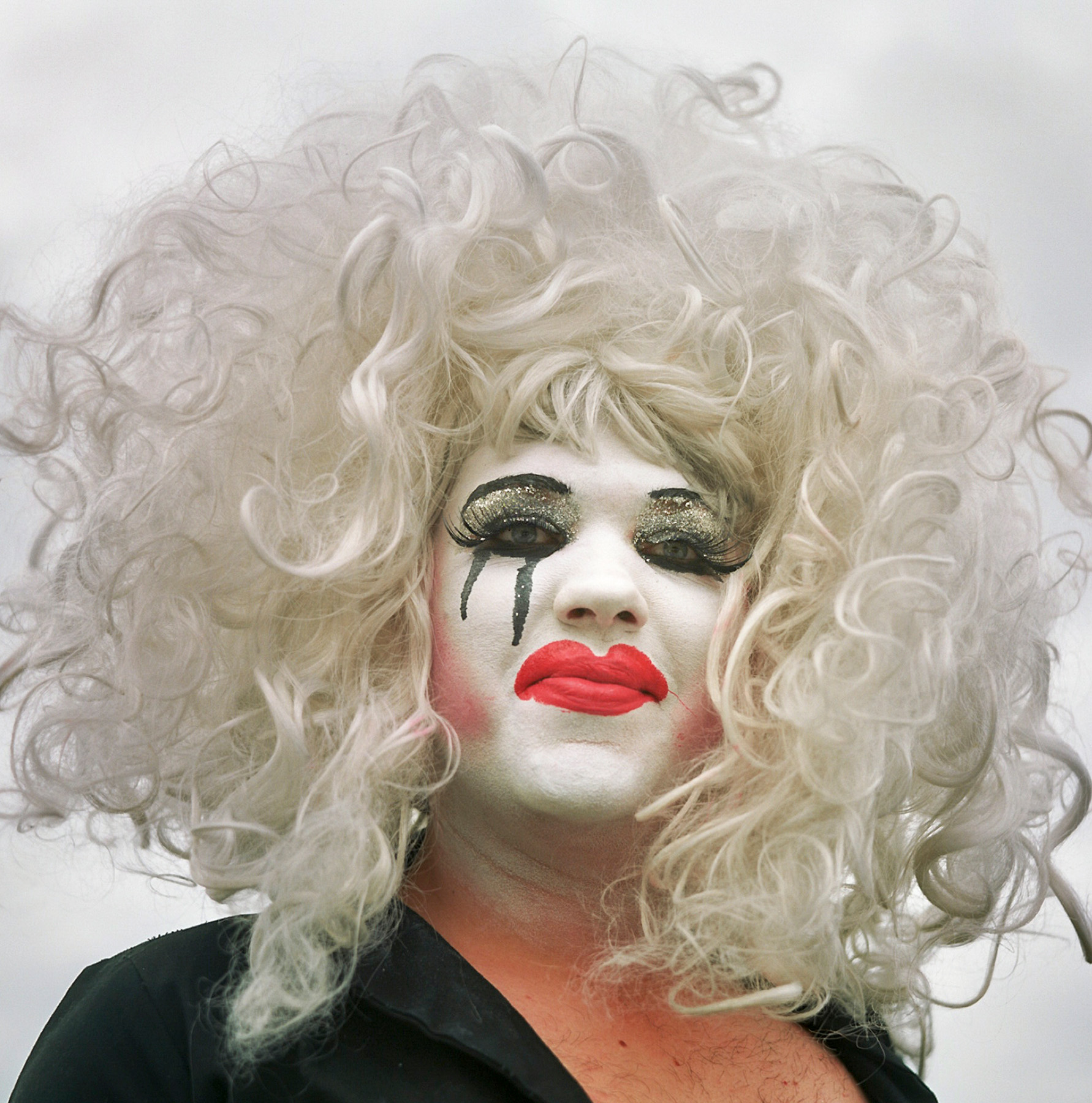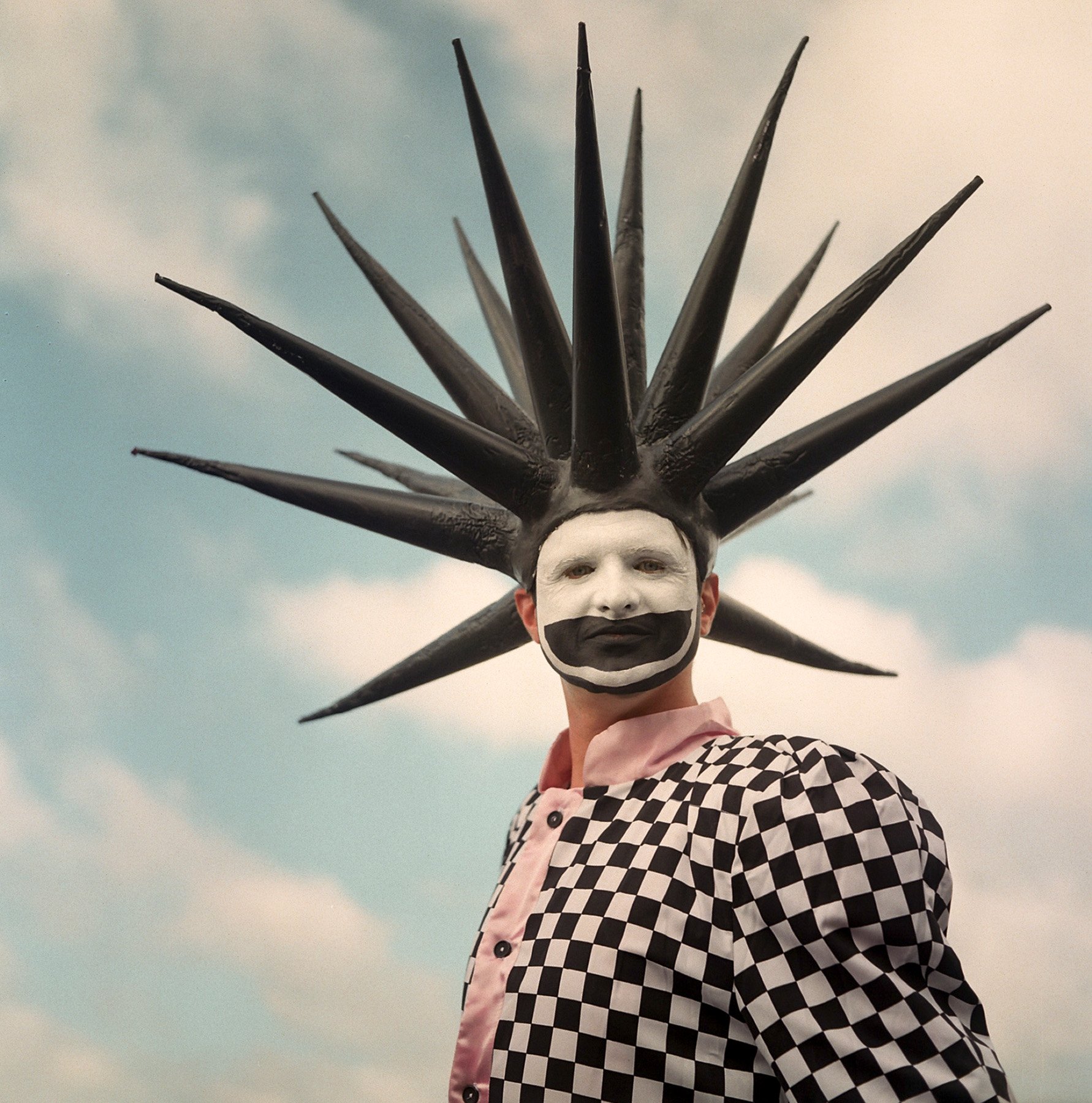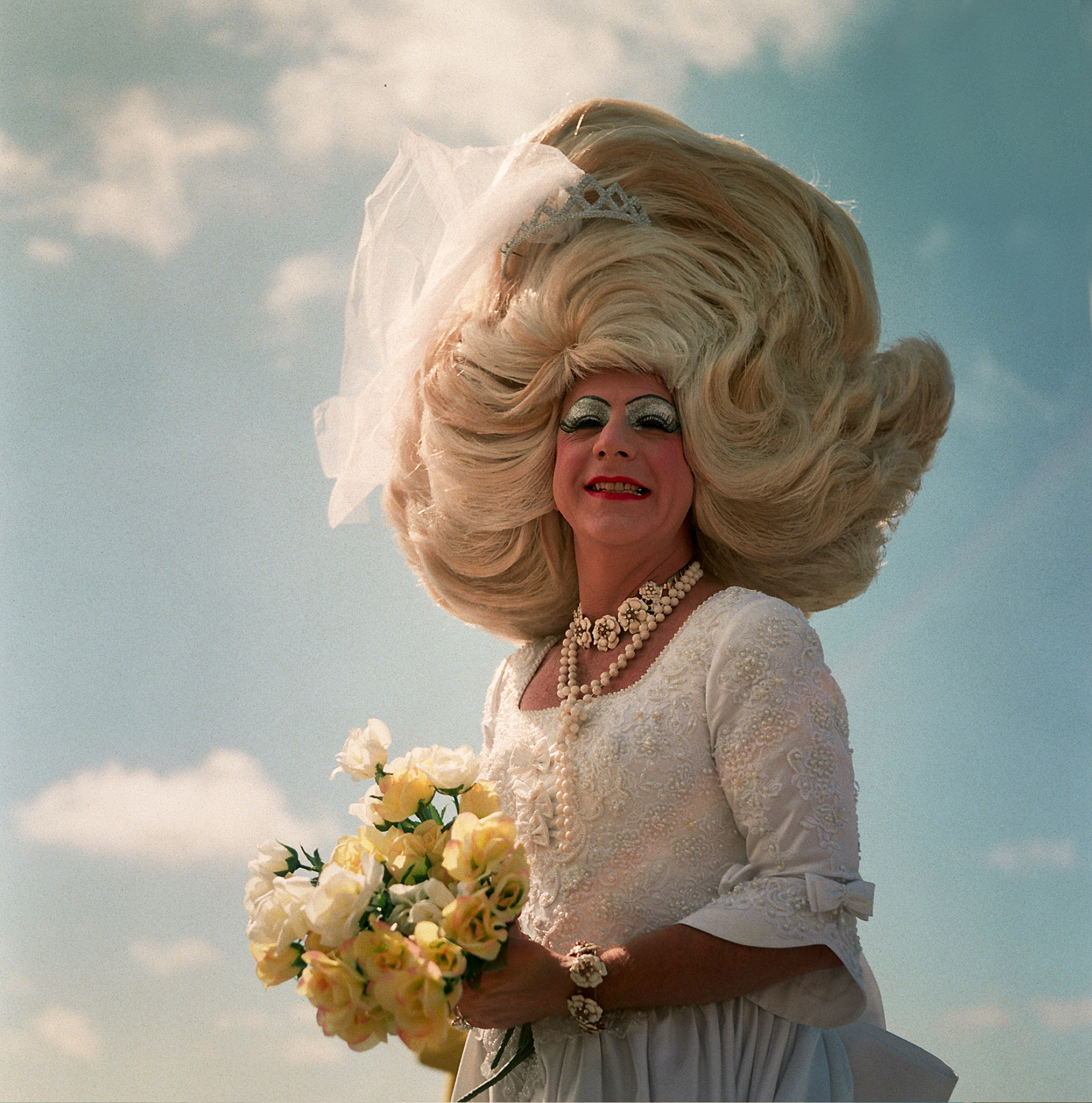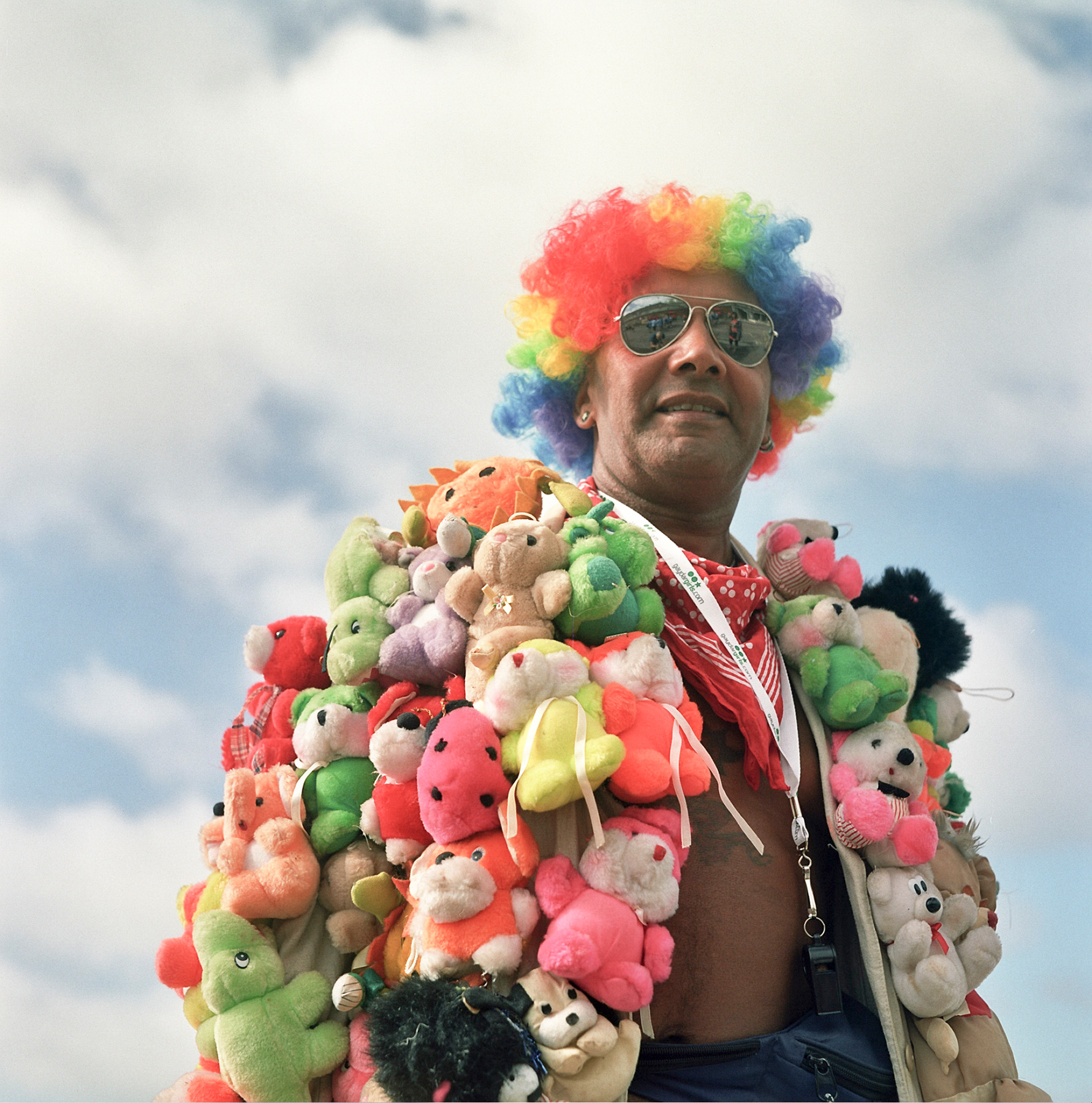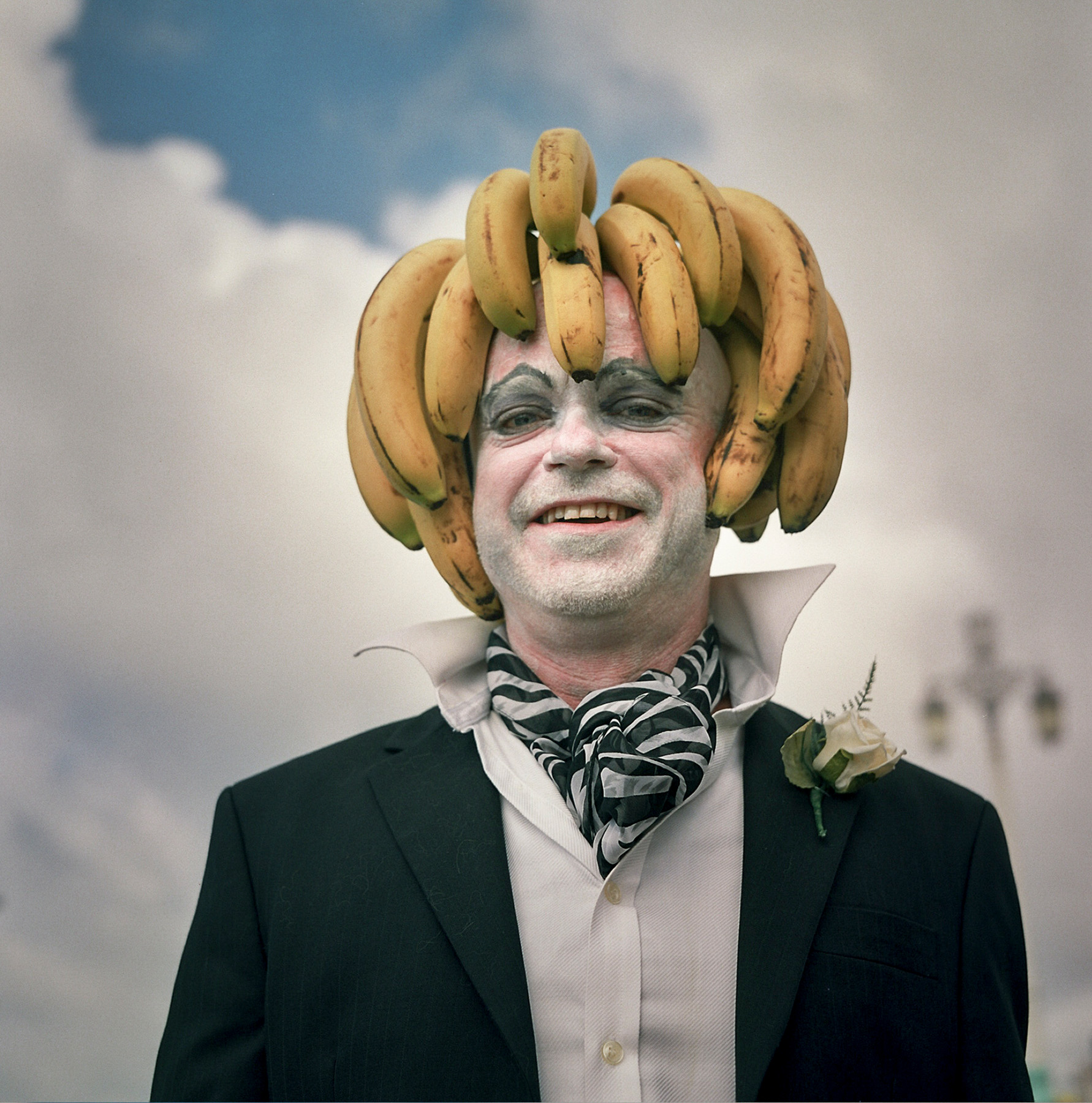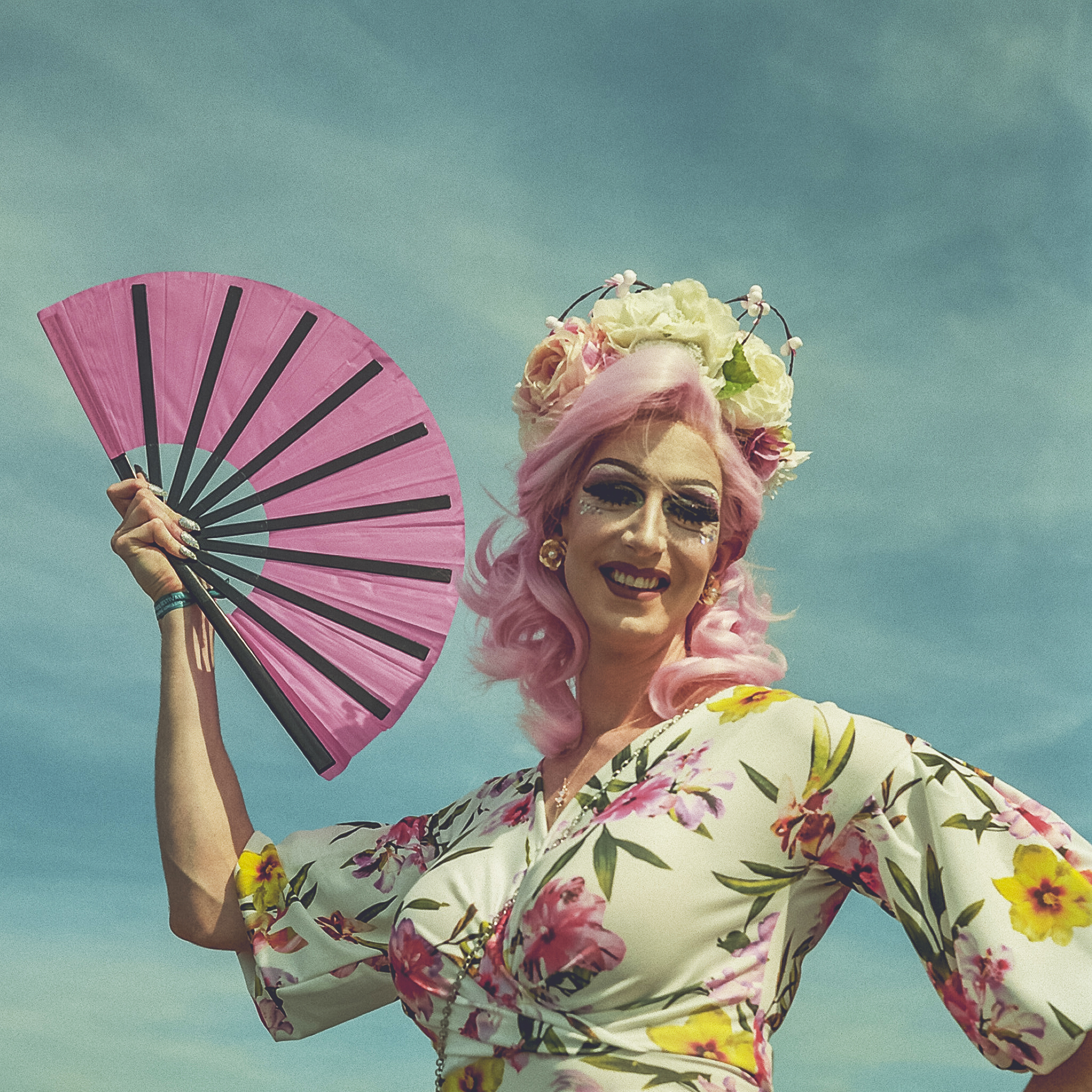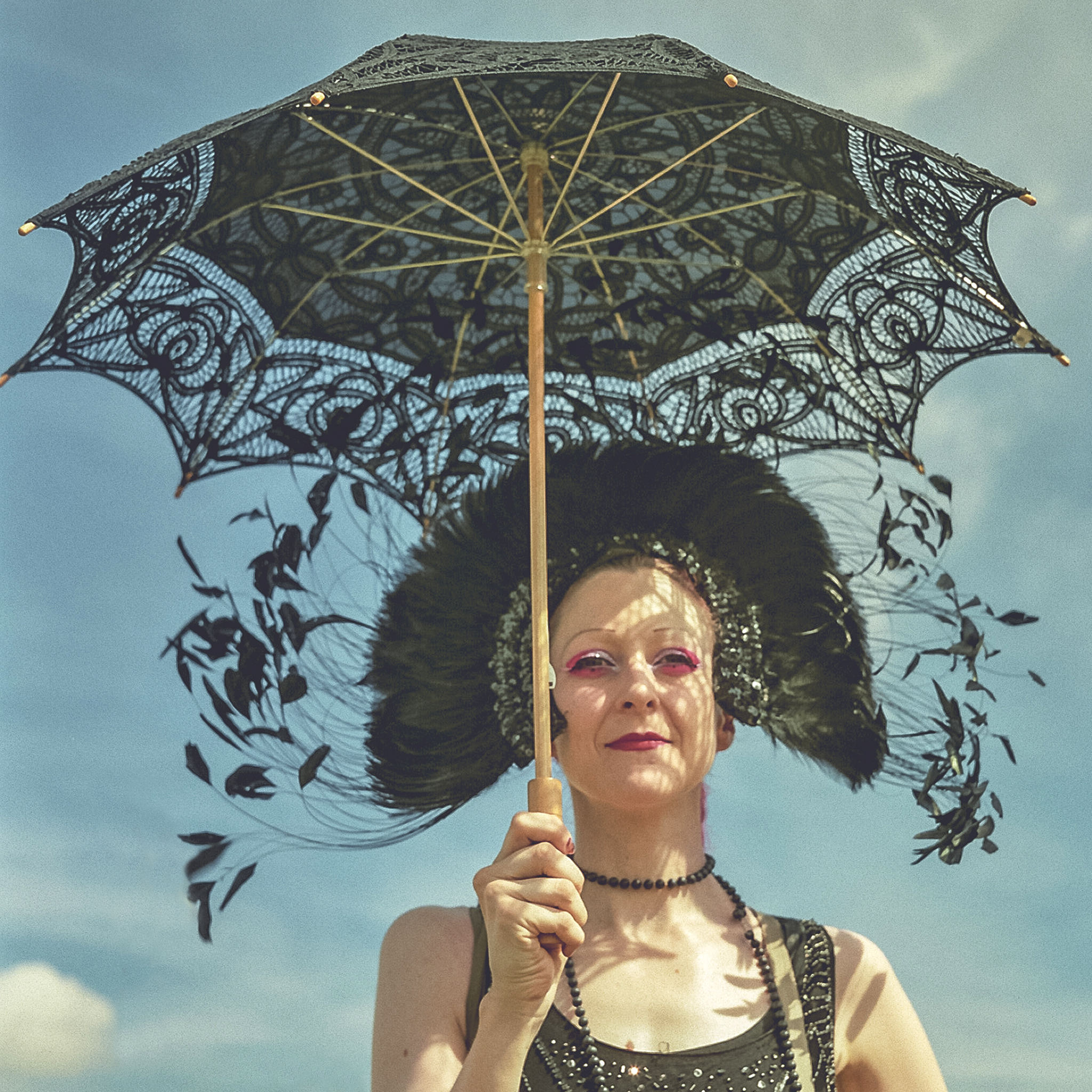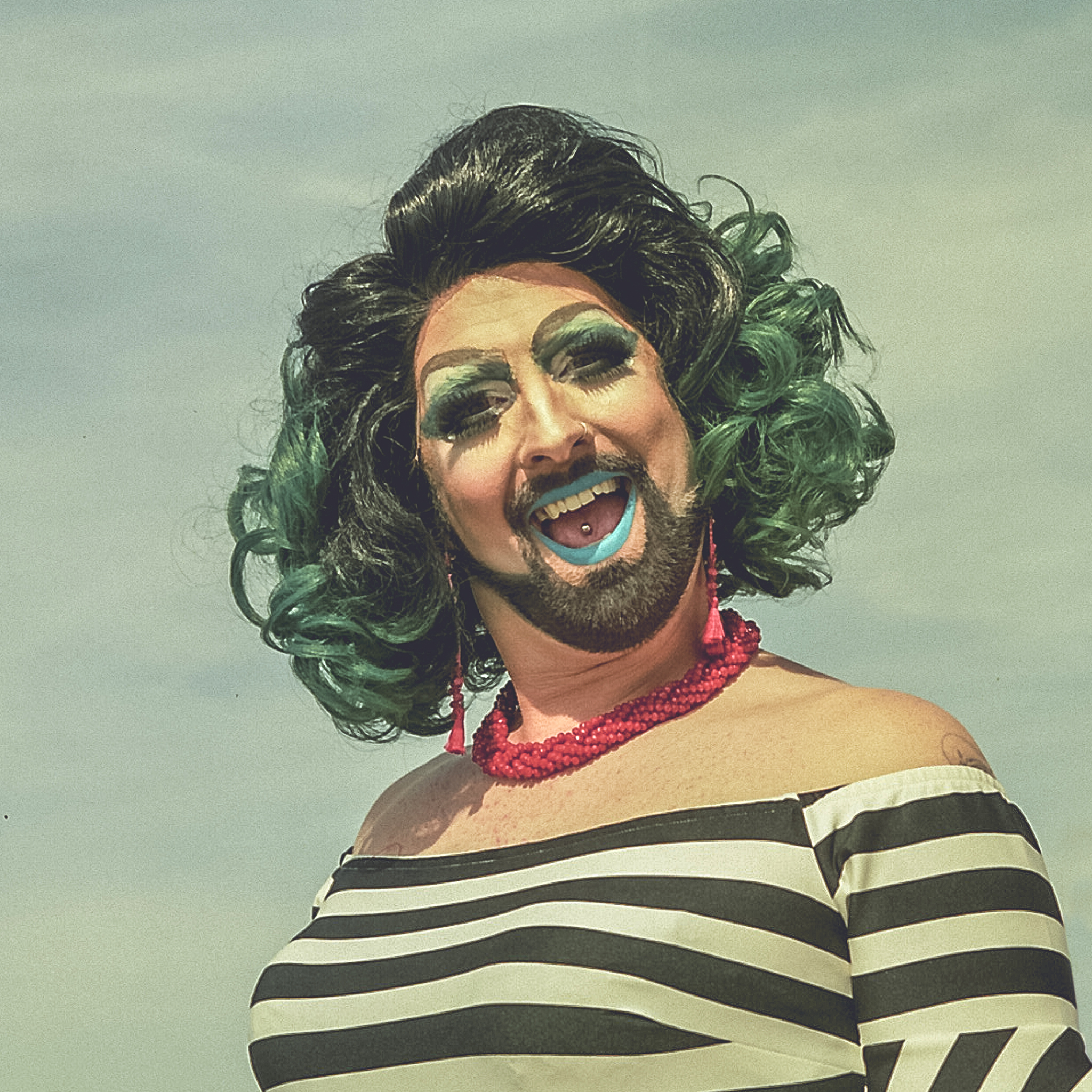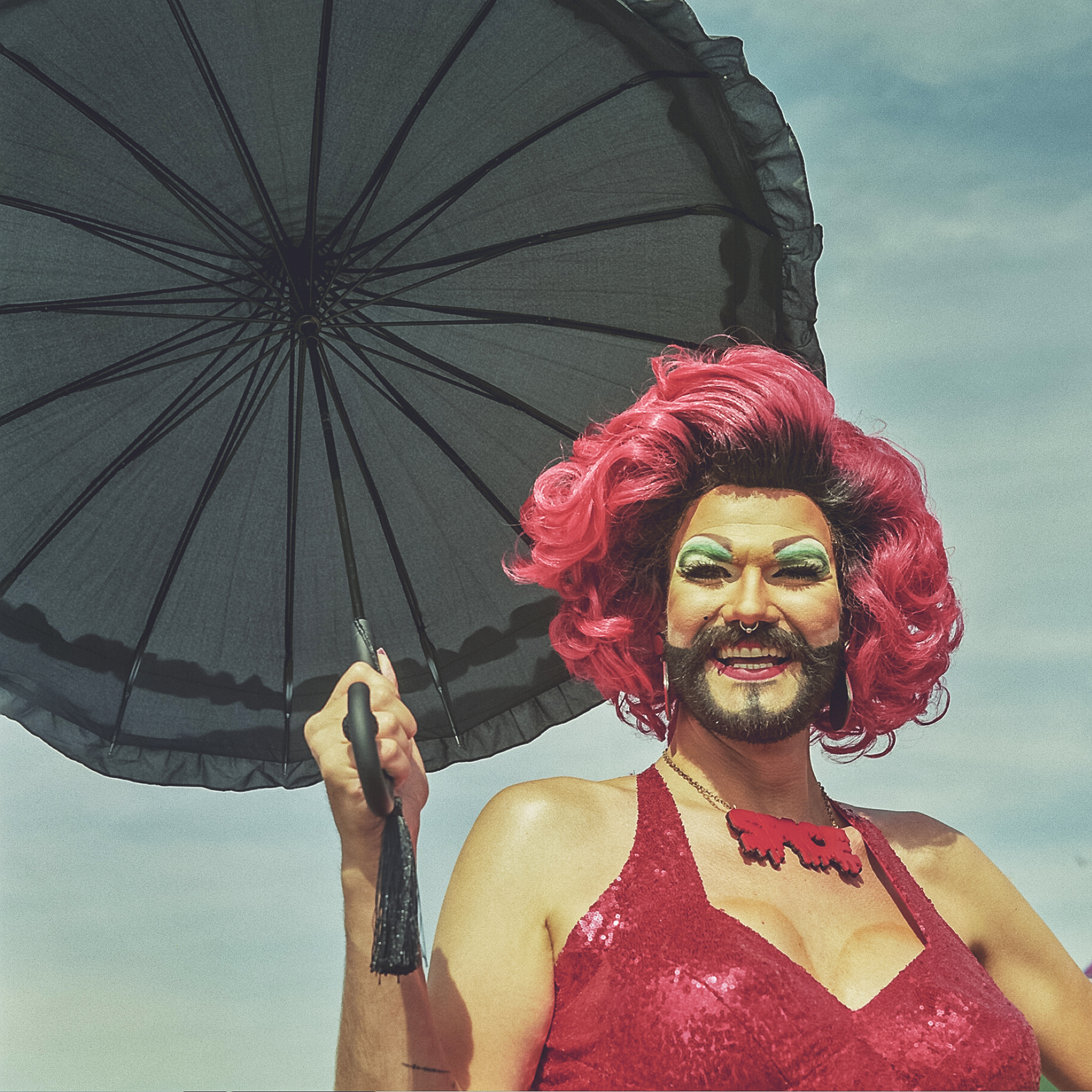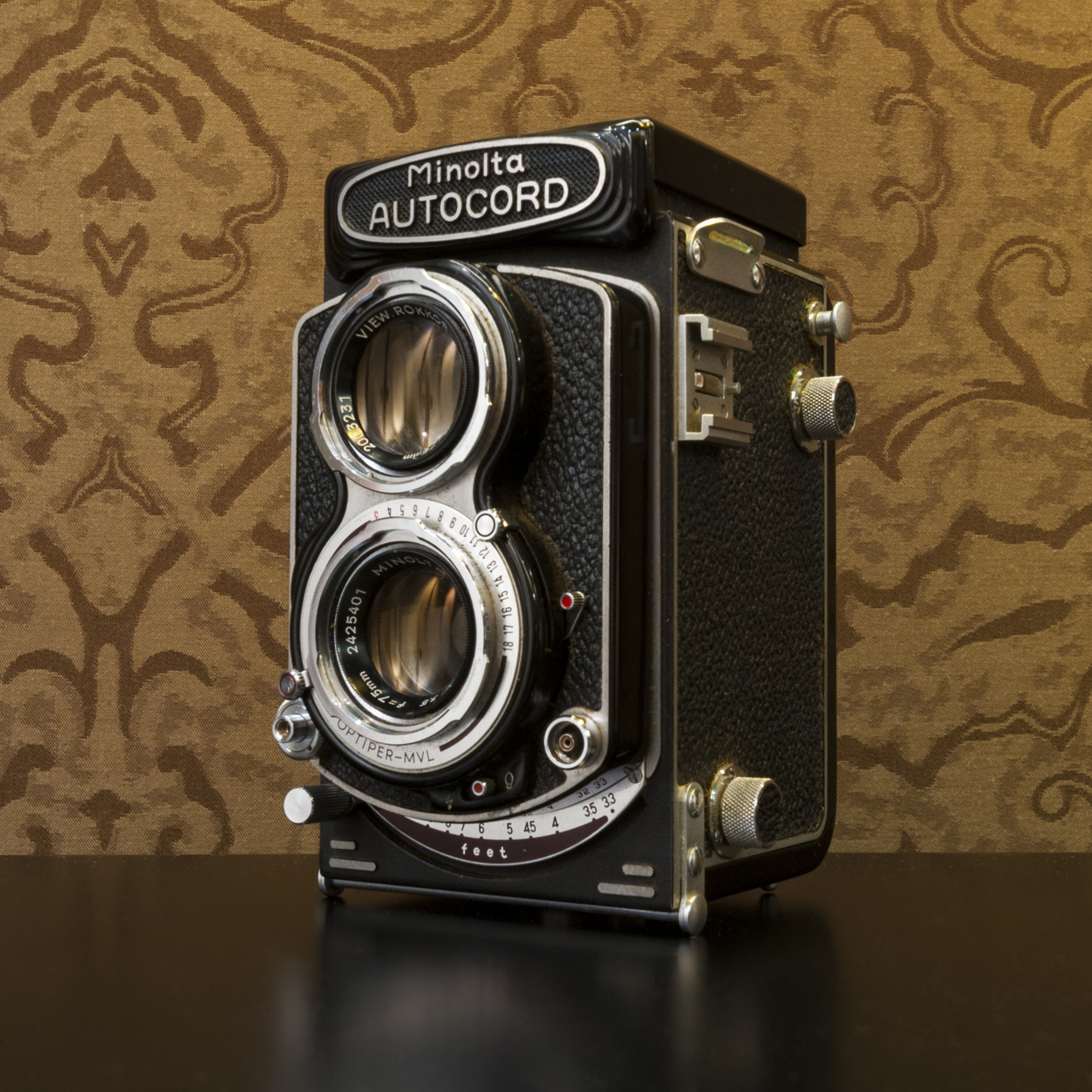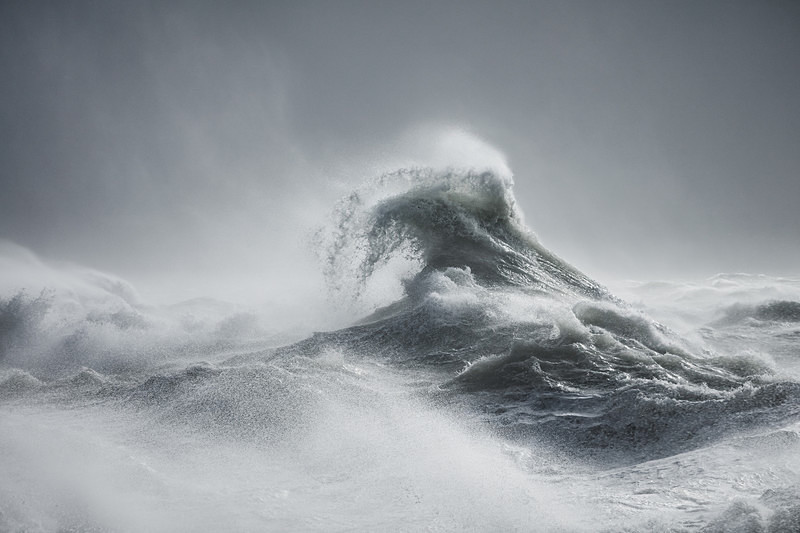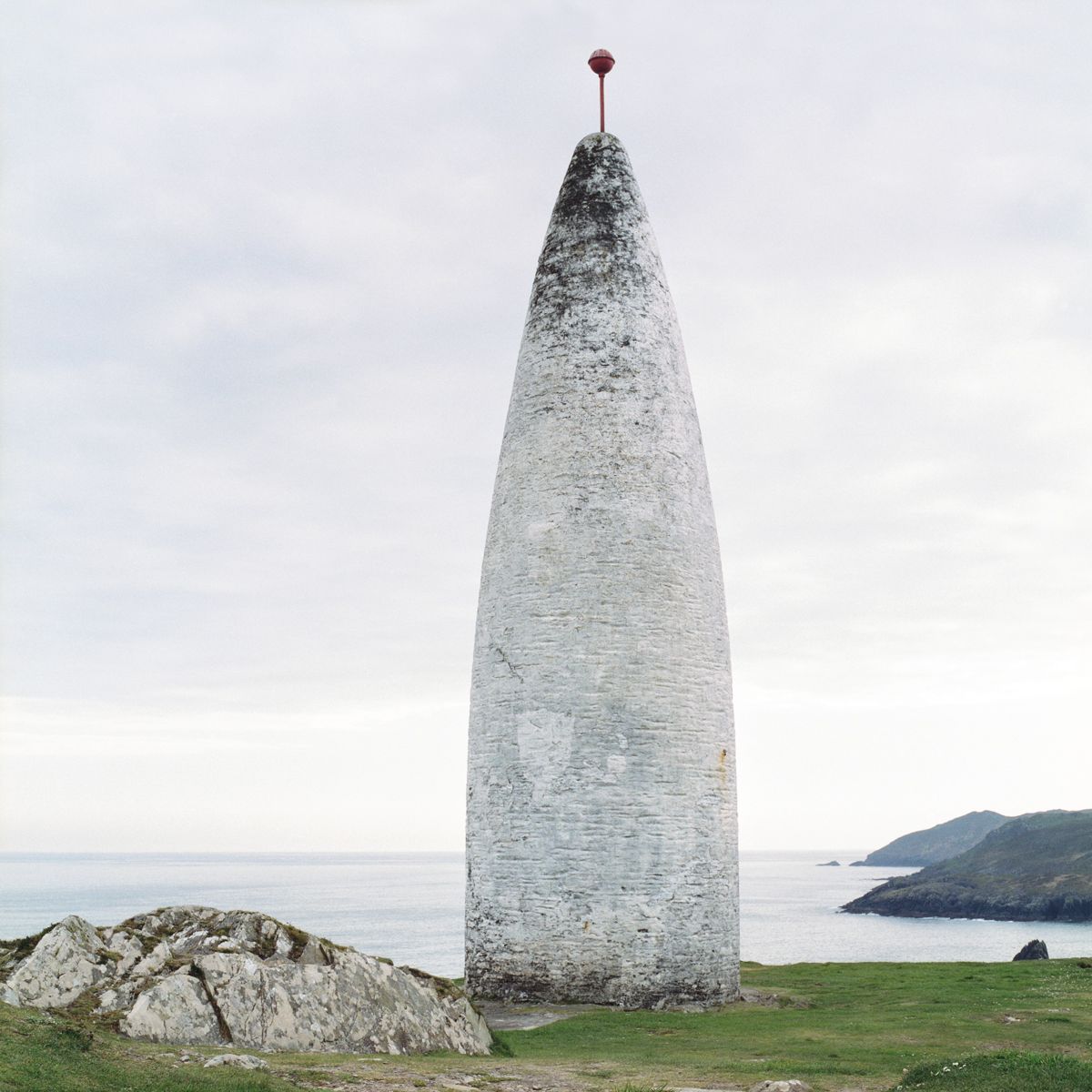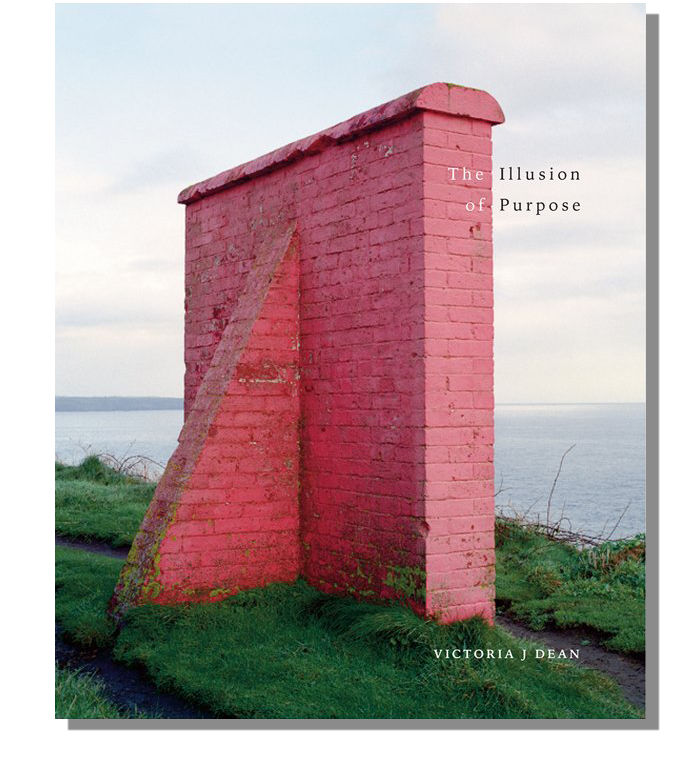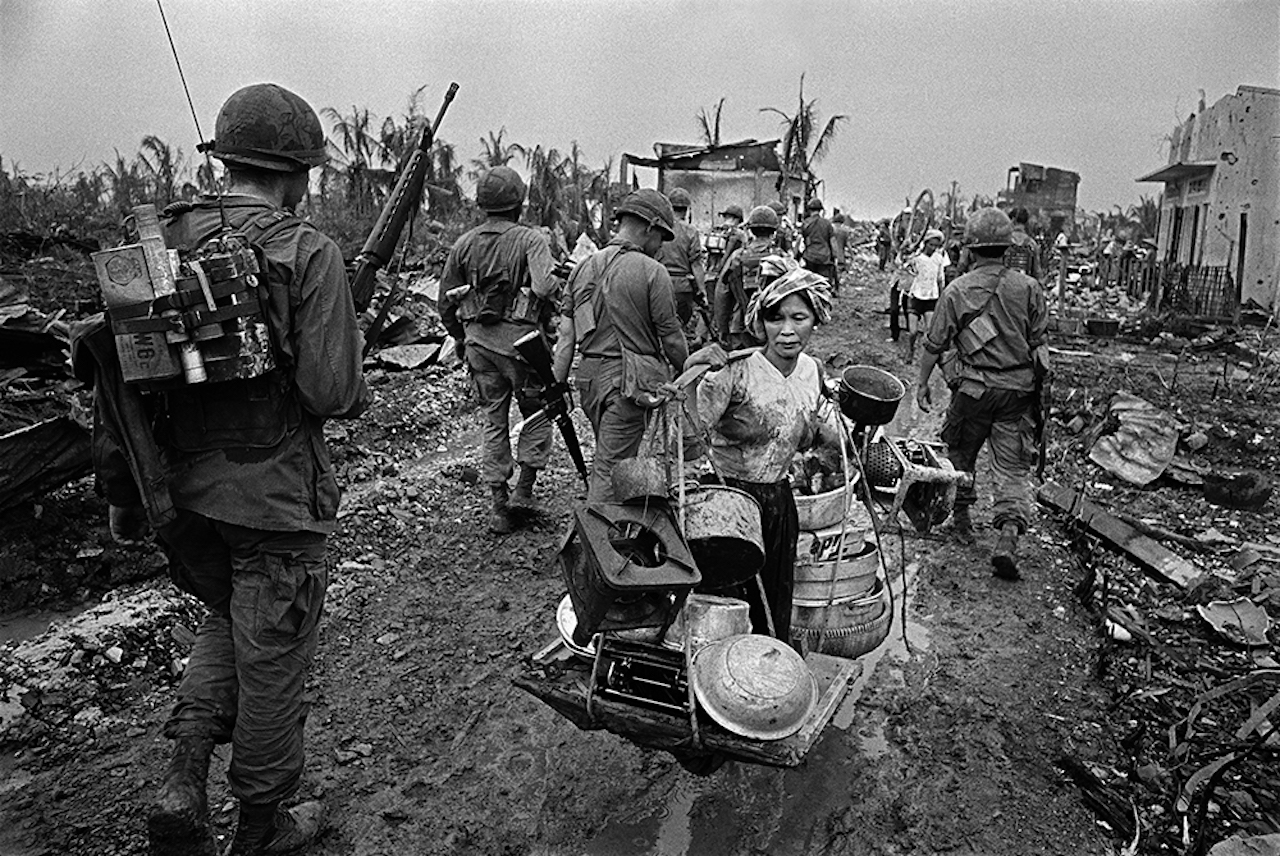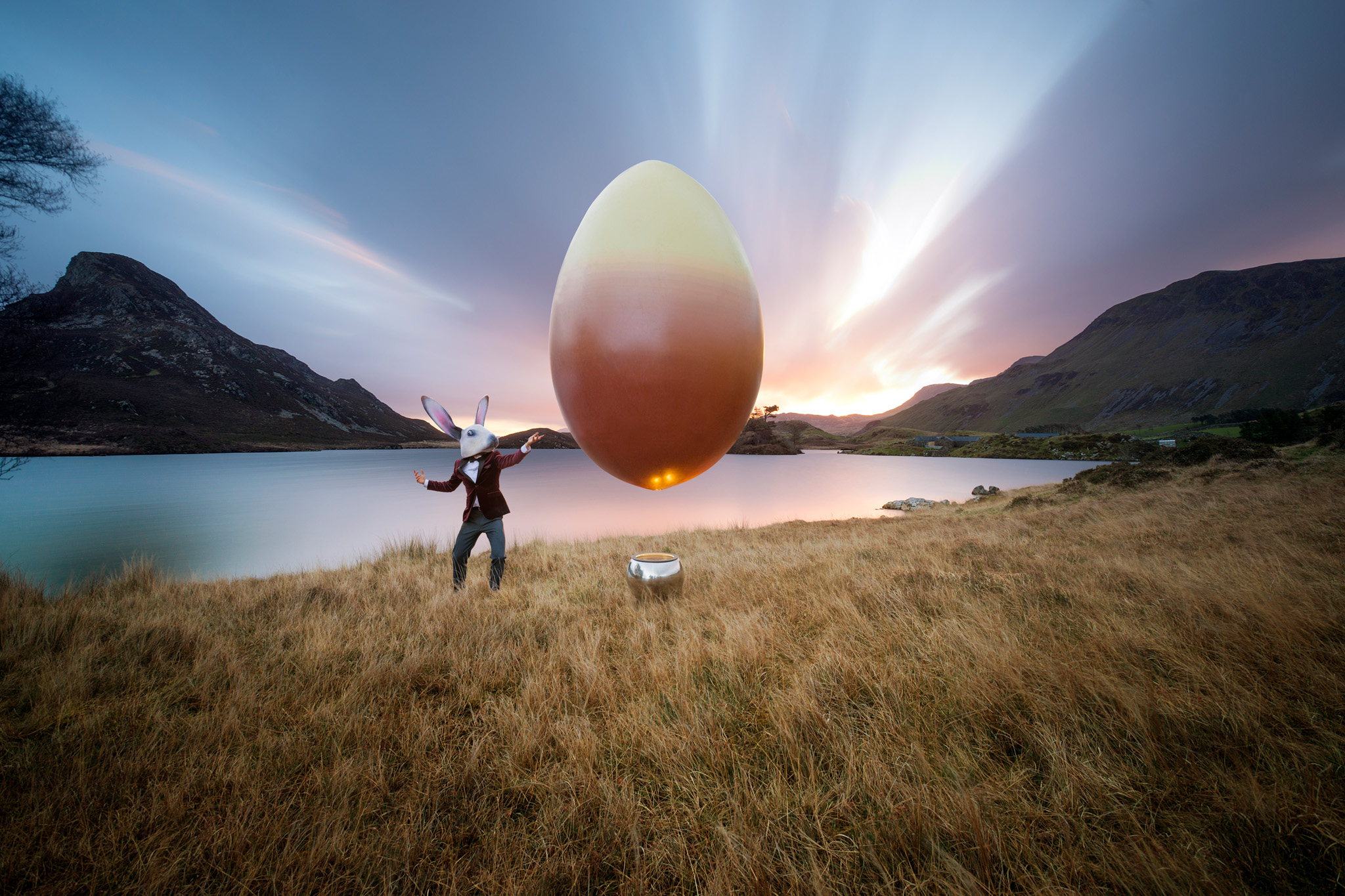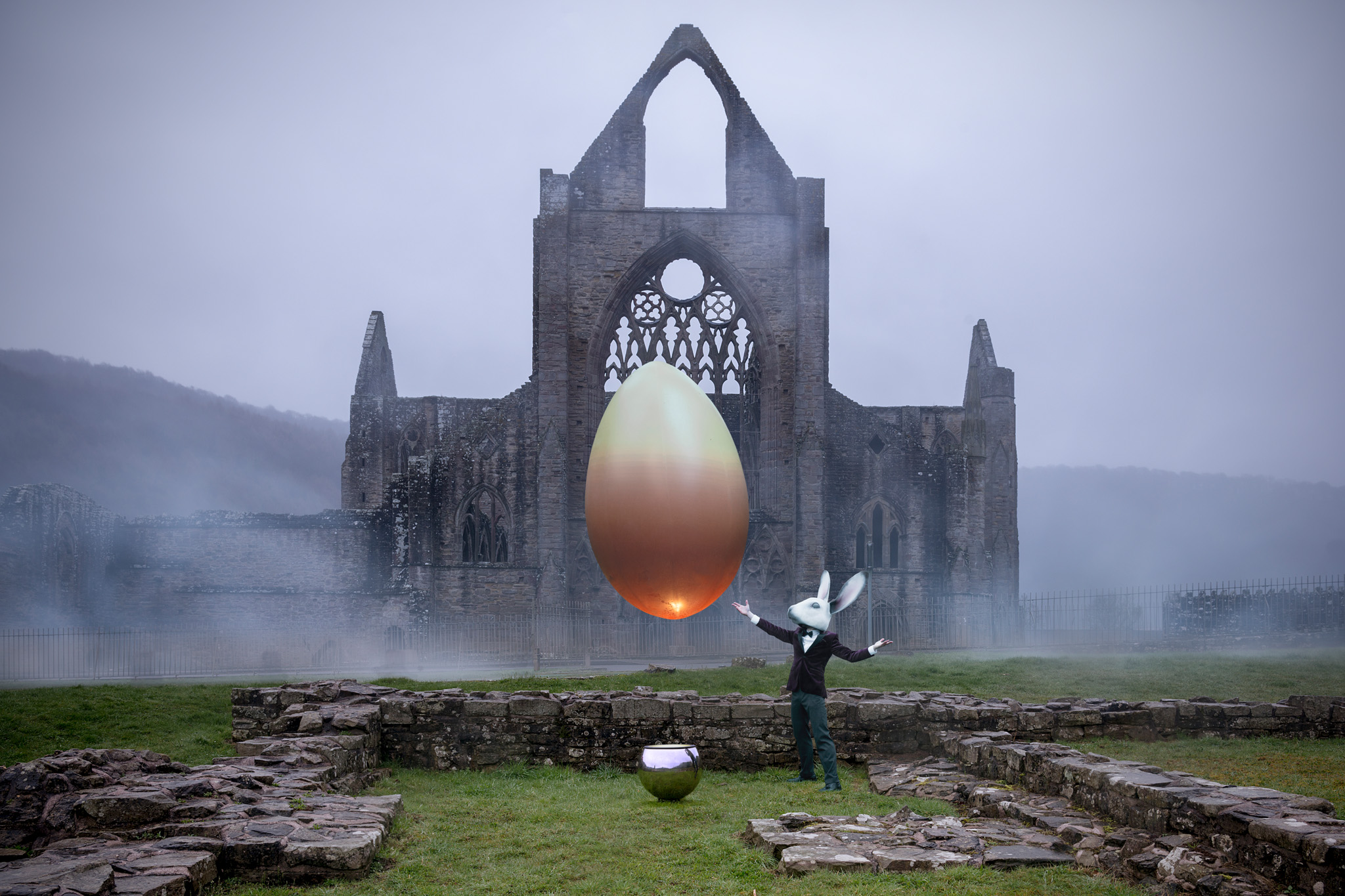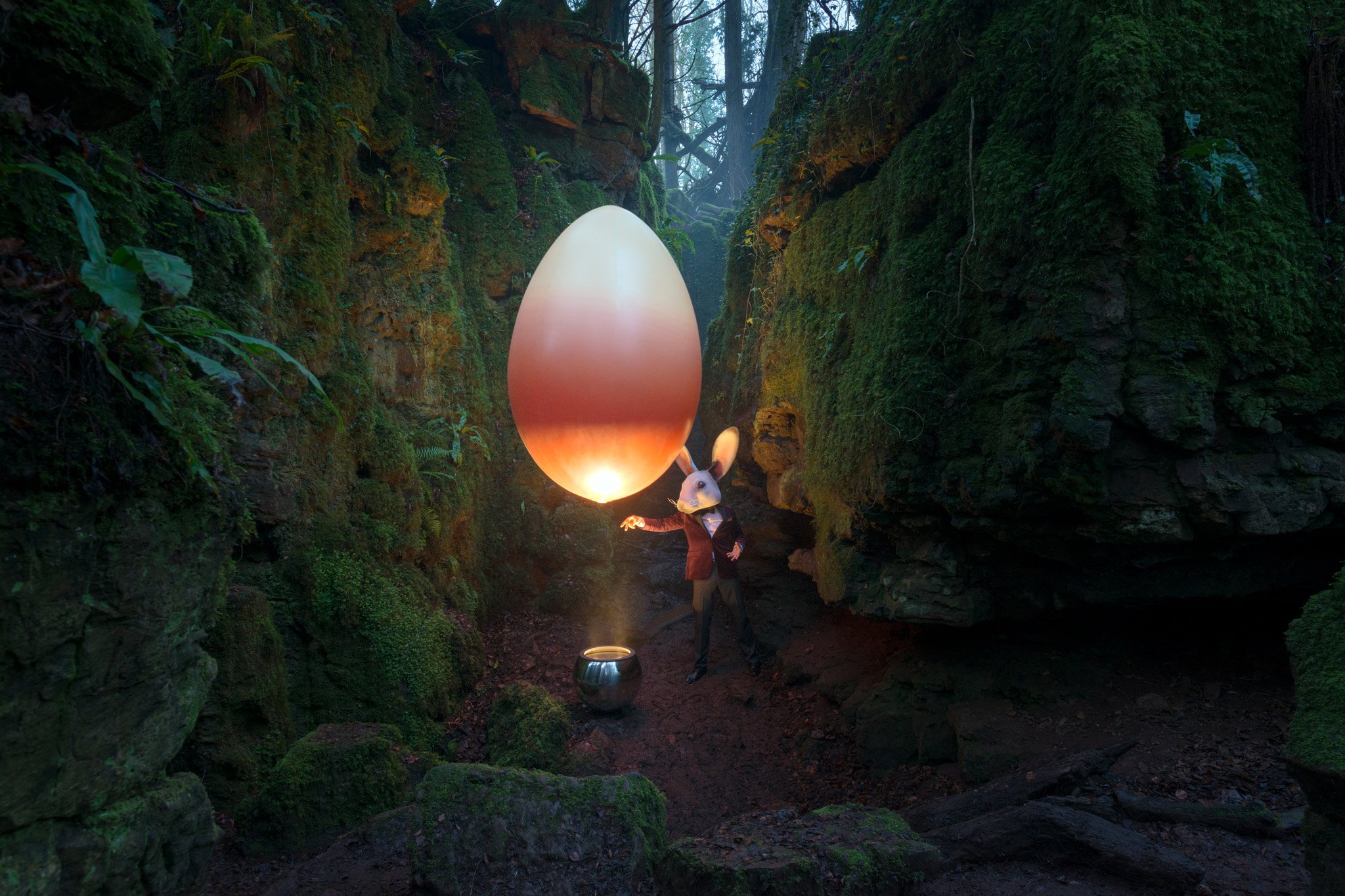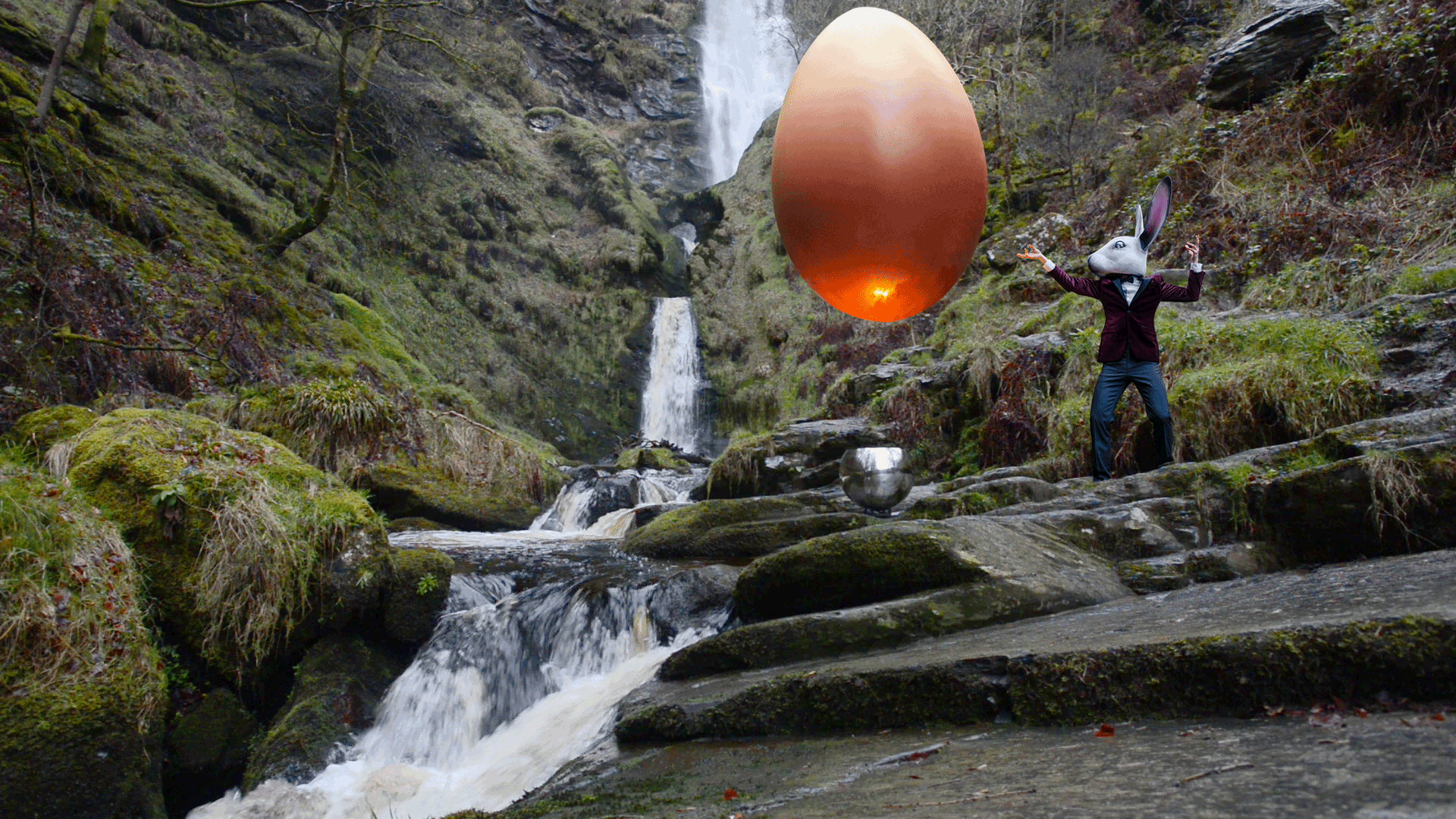I visited Lewes Bonfire about 15 years ago when I paraded with a drumming band. The experience was mixed - I was slightly traumatised at having to step over exploding bangers all night but totally enthralled by the fiery visions that etched themselves into my brain. This year, not encumbered by the commute from London, I vowed to return with a camera. With all trains cancelled an attempt to keep the numbers down, I decided to cycle the 9 miles with my friend and accomplished photographer Kevin Meredith. We got there early and positioned ourselves at the bottom of the High Street, just beating the scrum of press photographers. It was obviously the spot to be for an establishing shot. The first procession was led by 17 people carrying burning crosses. An unnerving sight, this commemorates the 17 protestants who burned at the stake in 1555.
Unlike the newspaper guys, we didn’t have to rush off to the next job and it was later in the evening that the pictures became really interesting. We headed up the hill through back streets and twitterns (the local name for alleyways) and emerged in the middle of a huge procession. At points I was able to get in the middle of the street and recapture some of the views I had all those years ago.
Lewes is the daddy of all Sussex Bonfires, and has been dubbed the bonfire capital of the world. As well as the 7 local bonfire societies 25 to 30 societies from East and West Sussex come to parade here, dressed as Tudors, Suffragettes, Zulus, Native Americans, Priests and First World War soldiers. Six parades end up at different bonfires around the town, with much competition between them about how big they can be made. We finished the night at the Waterloo bonfire which burnt so huge and with such intensity that a mini tornado started next to it.
Going to Lewes will ruin your local firework display at the recreation centre forever but it’s totally worth it.
You can see more of my pictures here.


